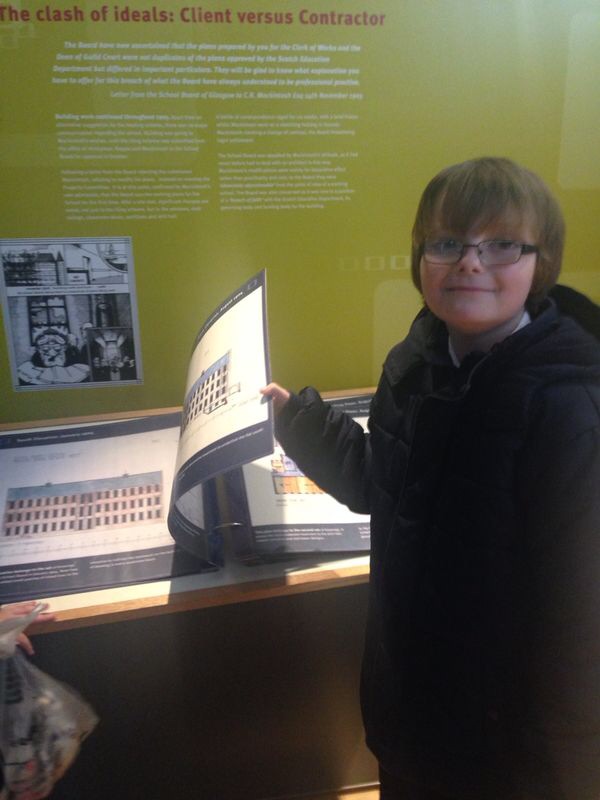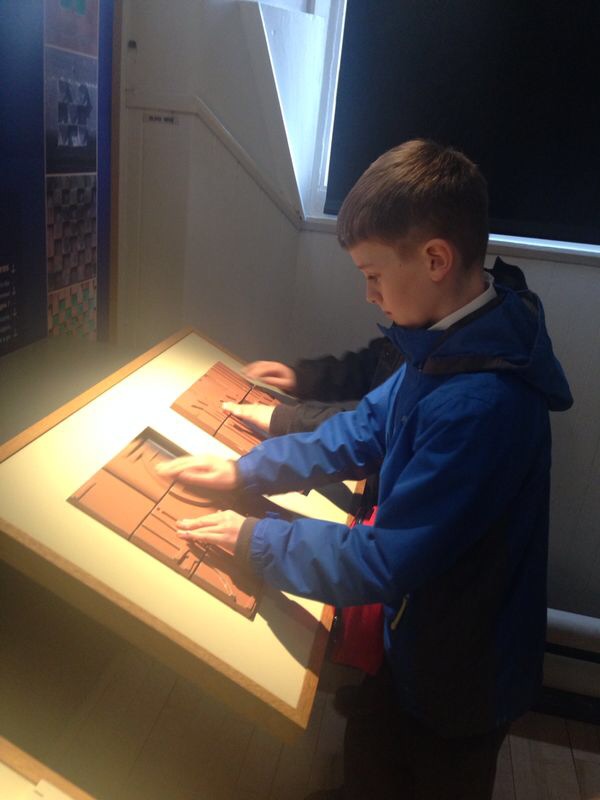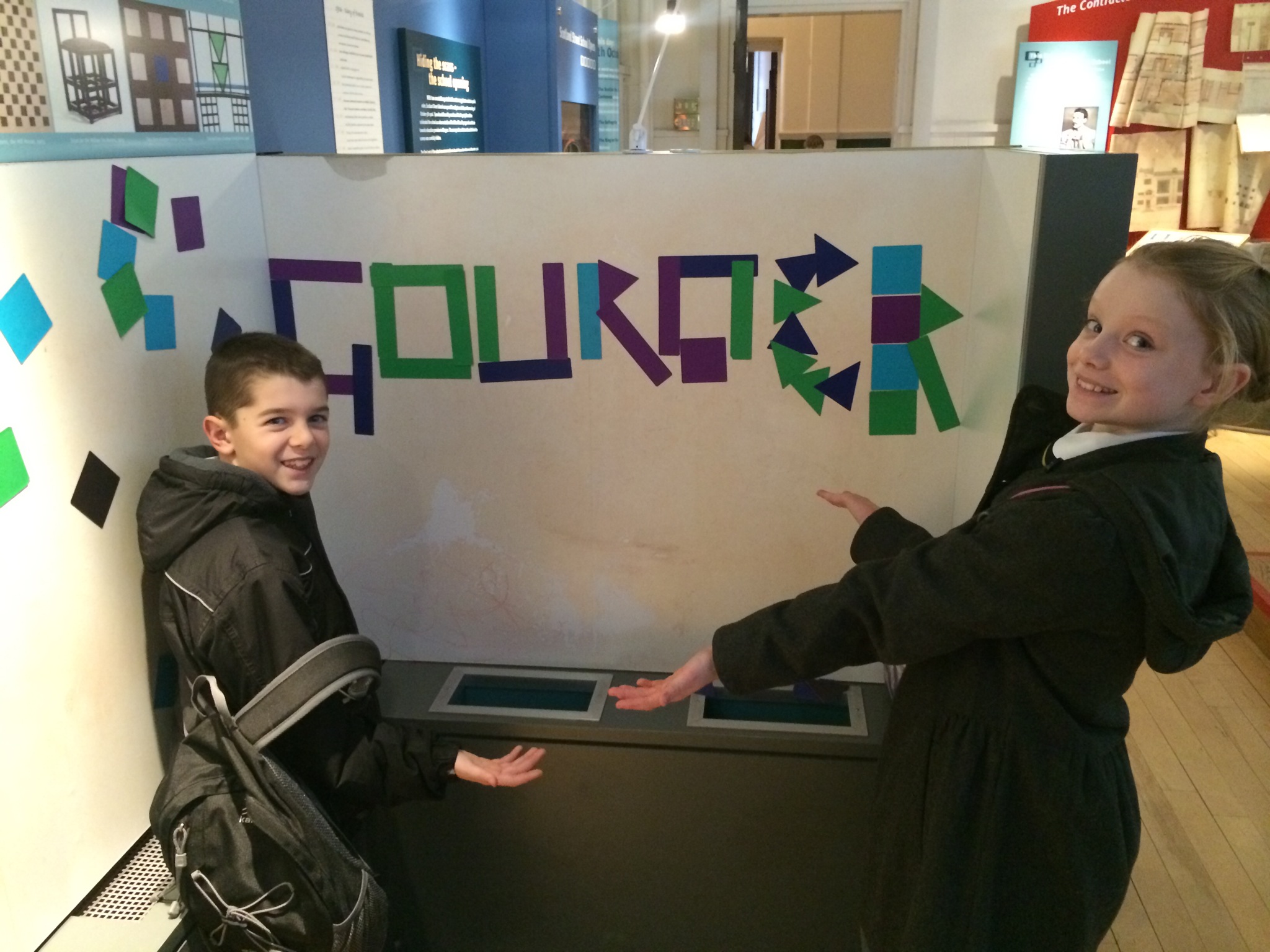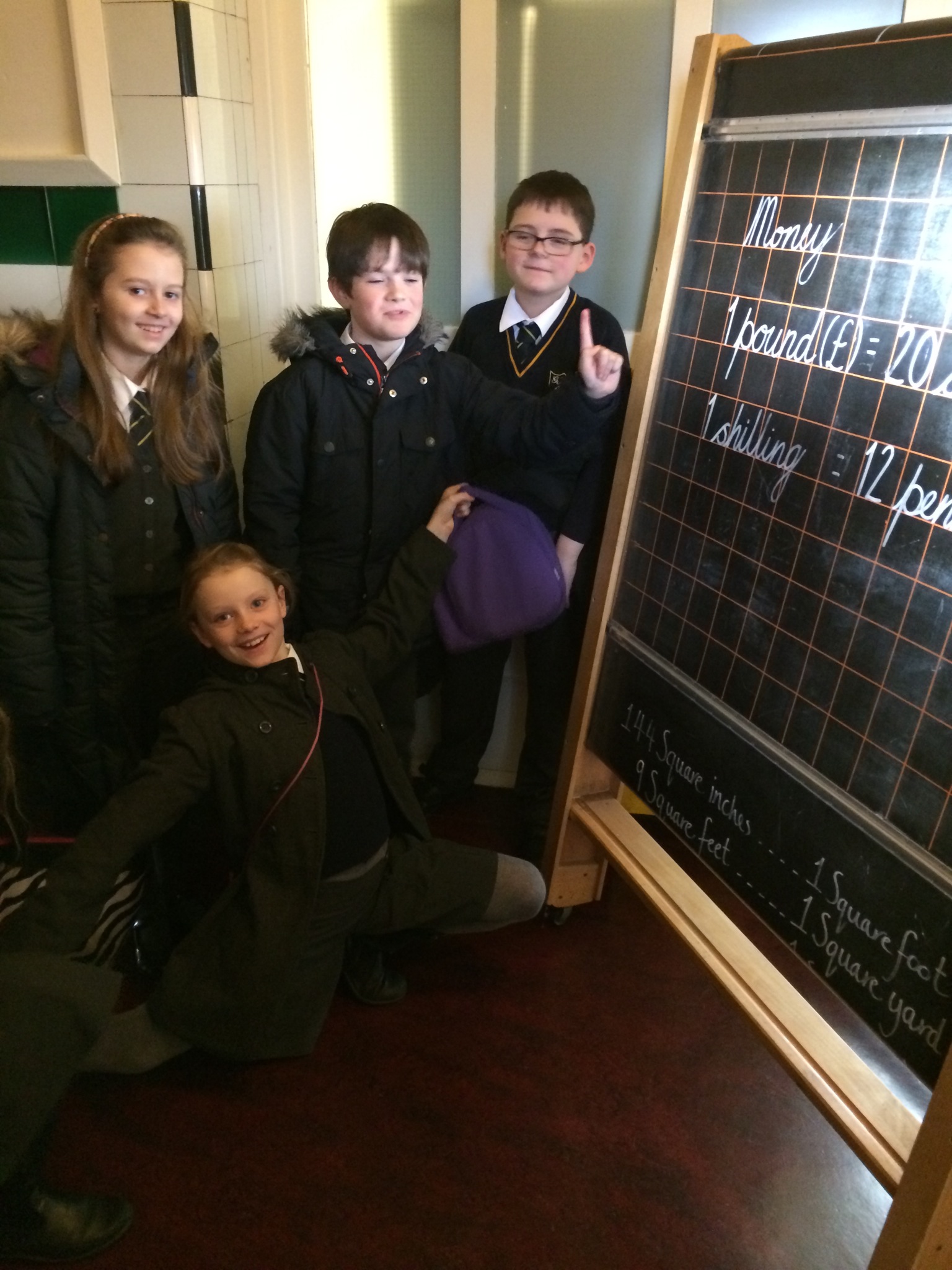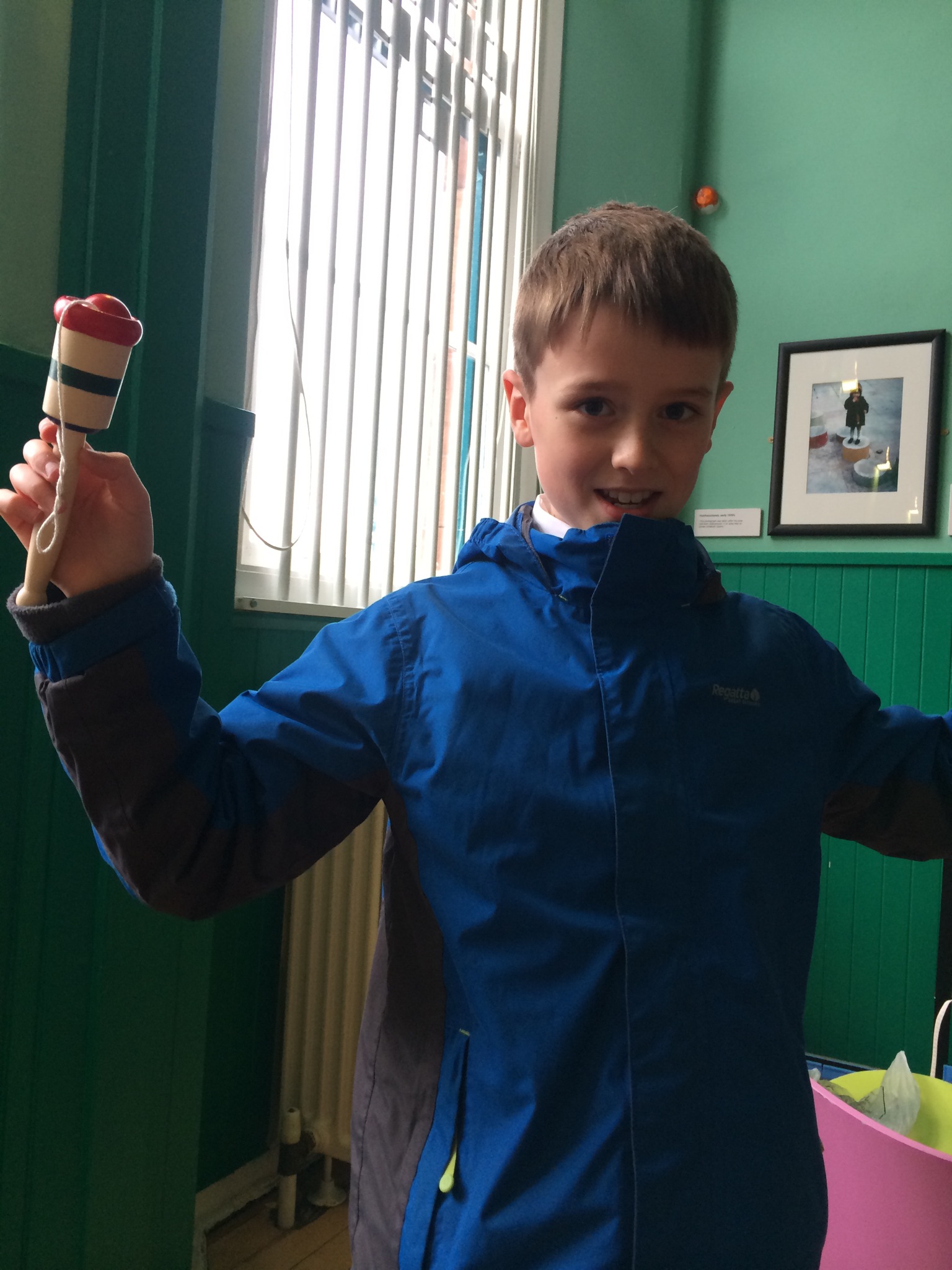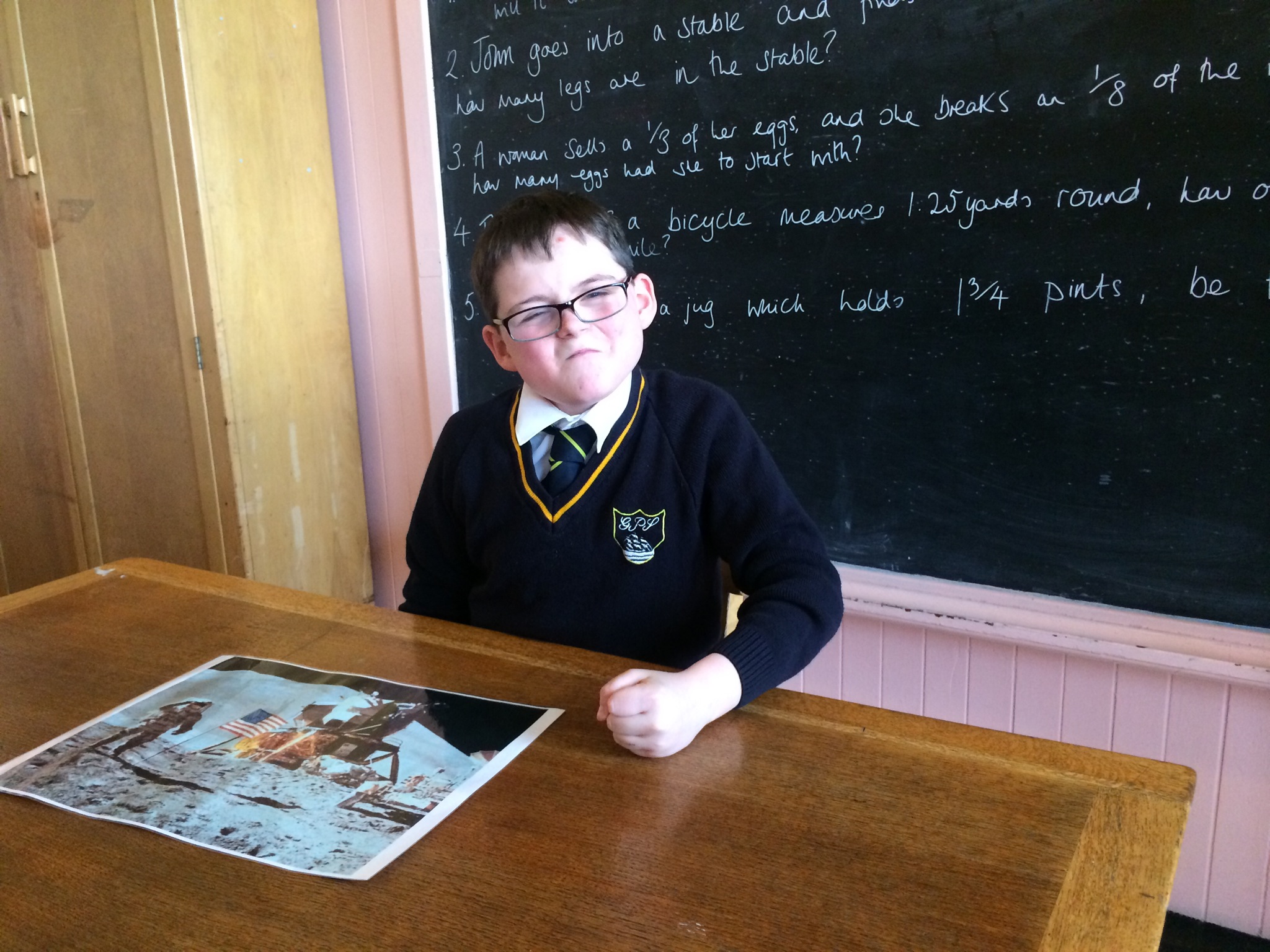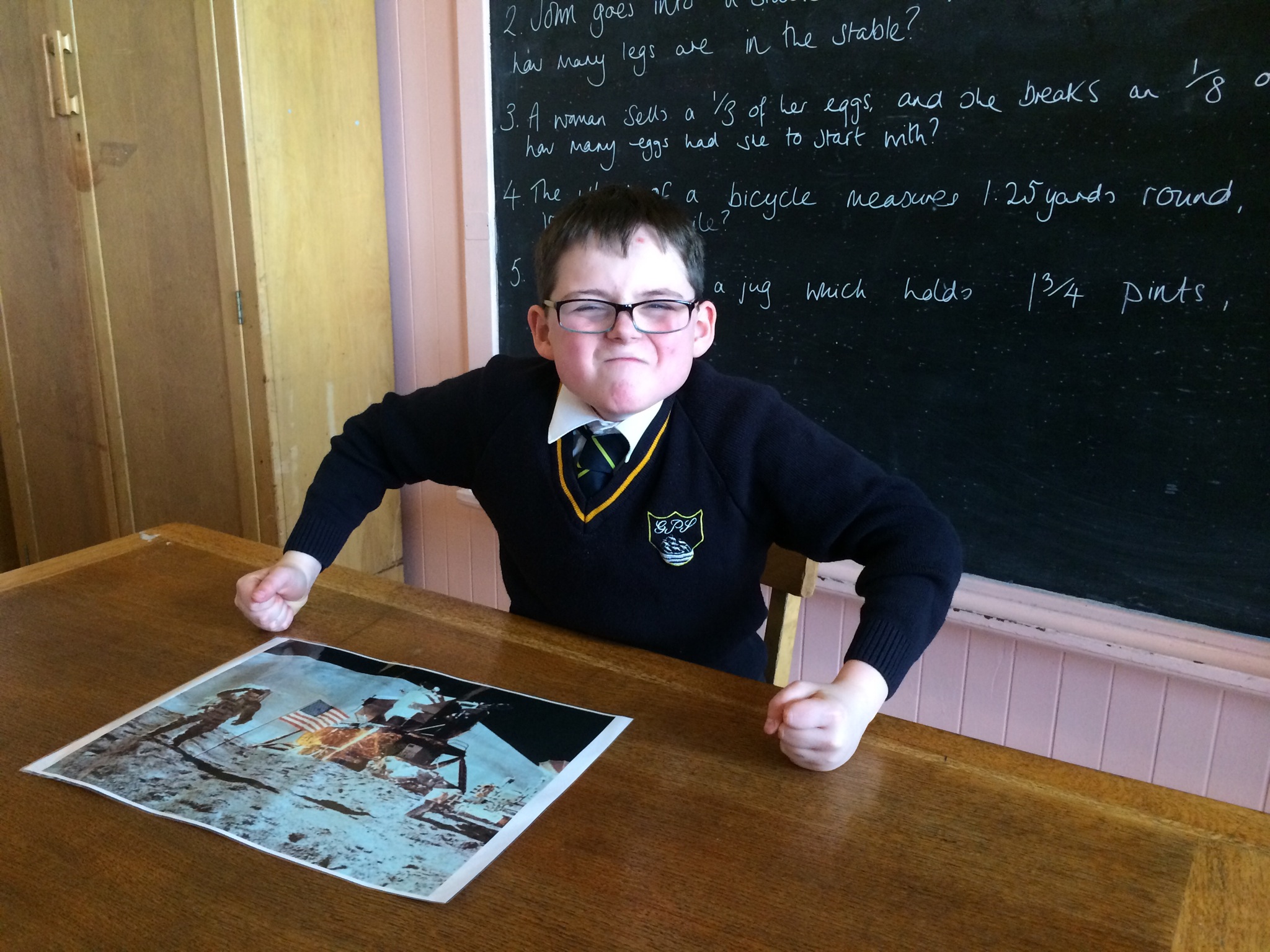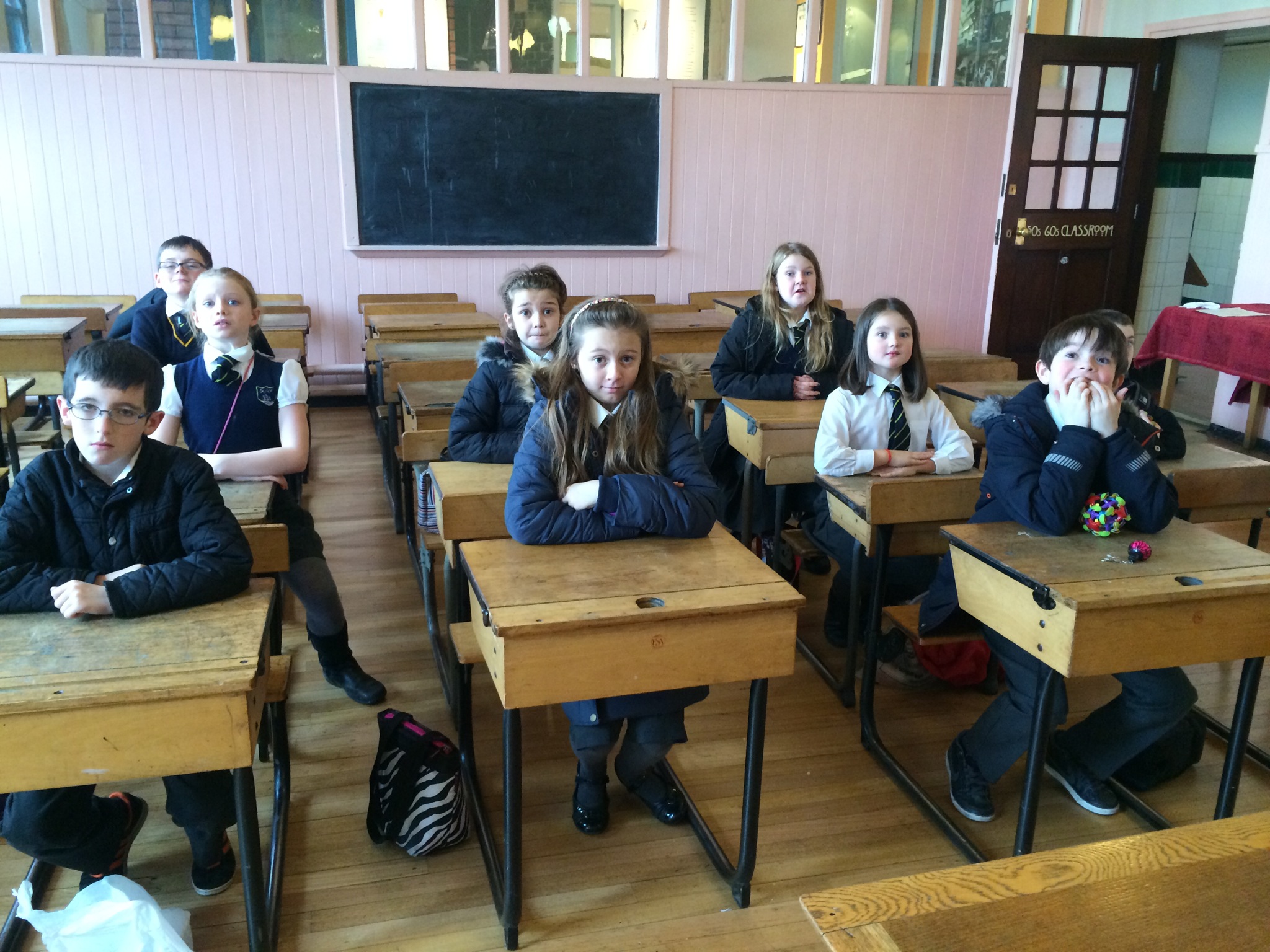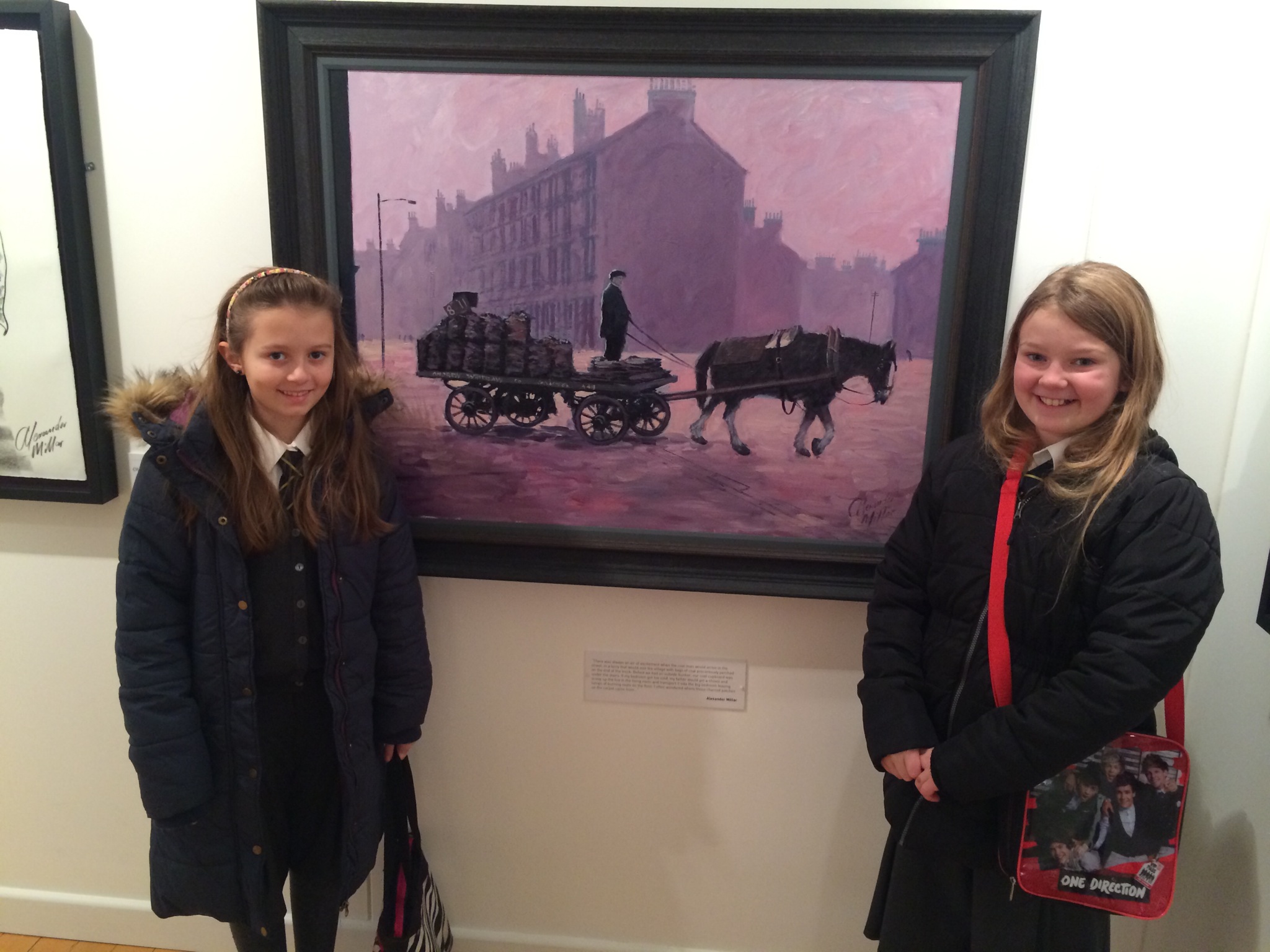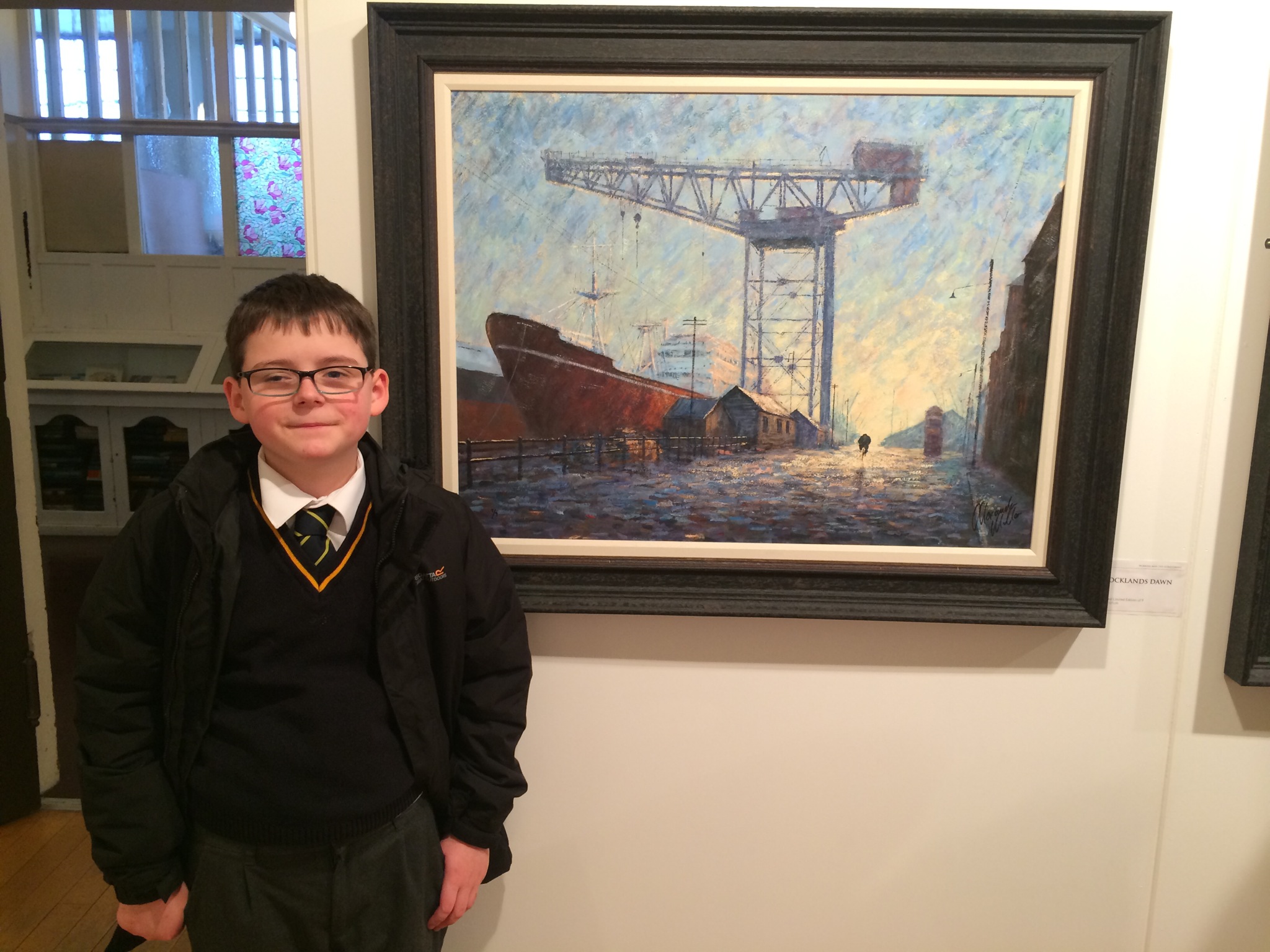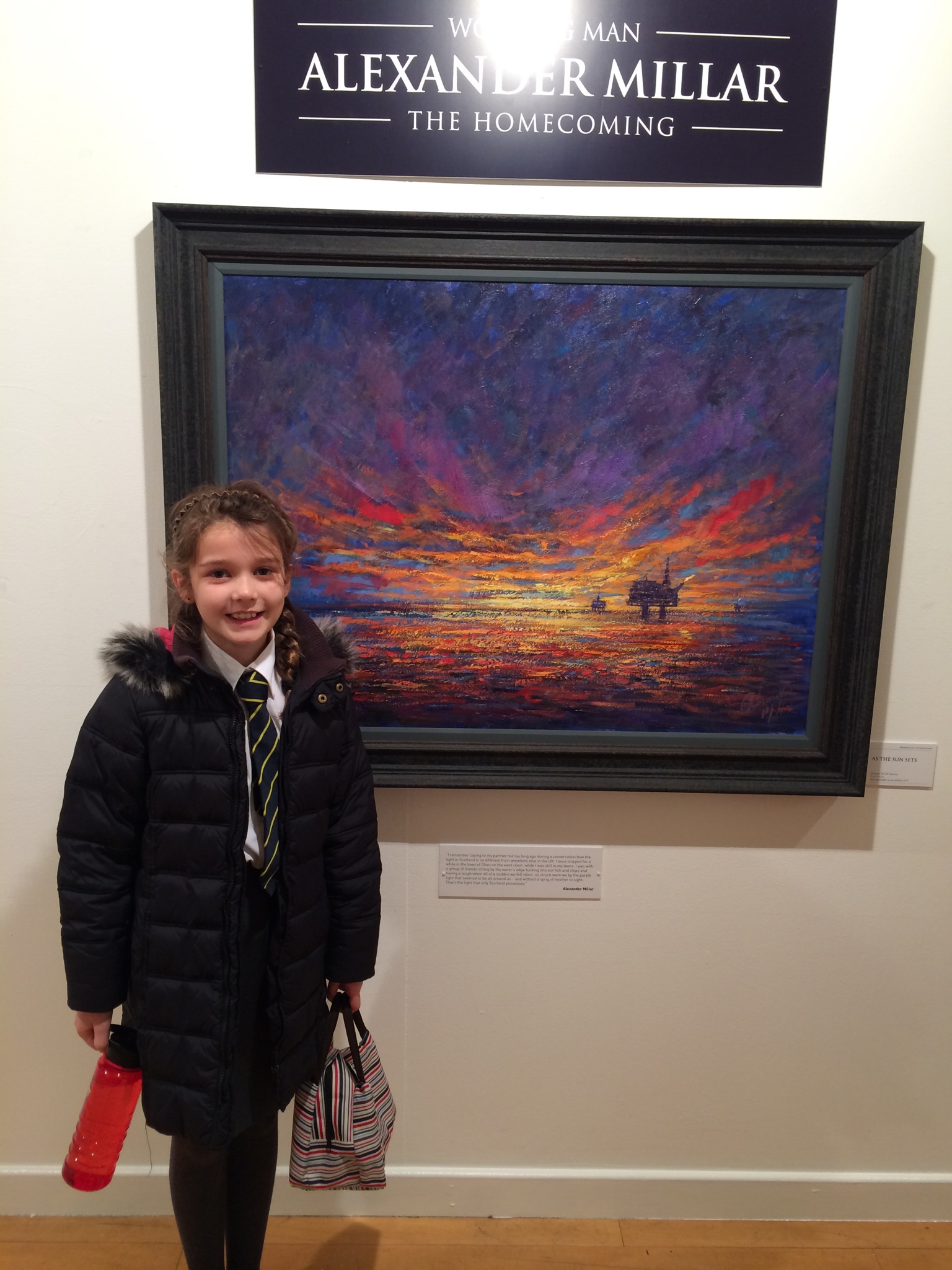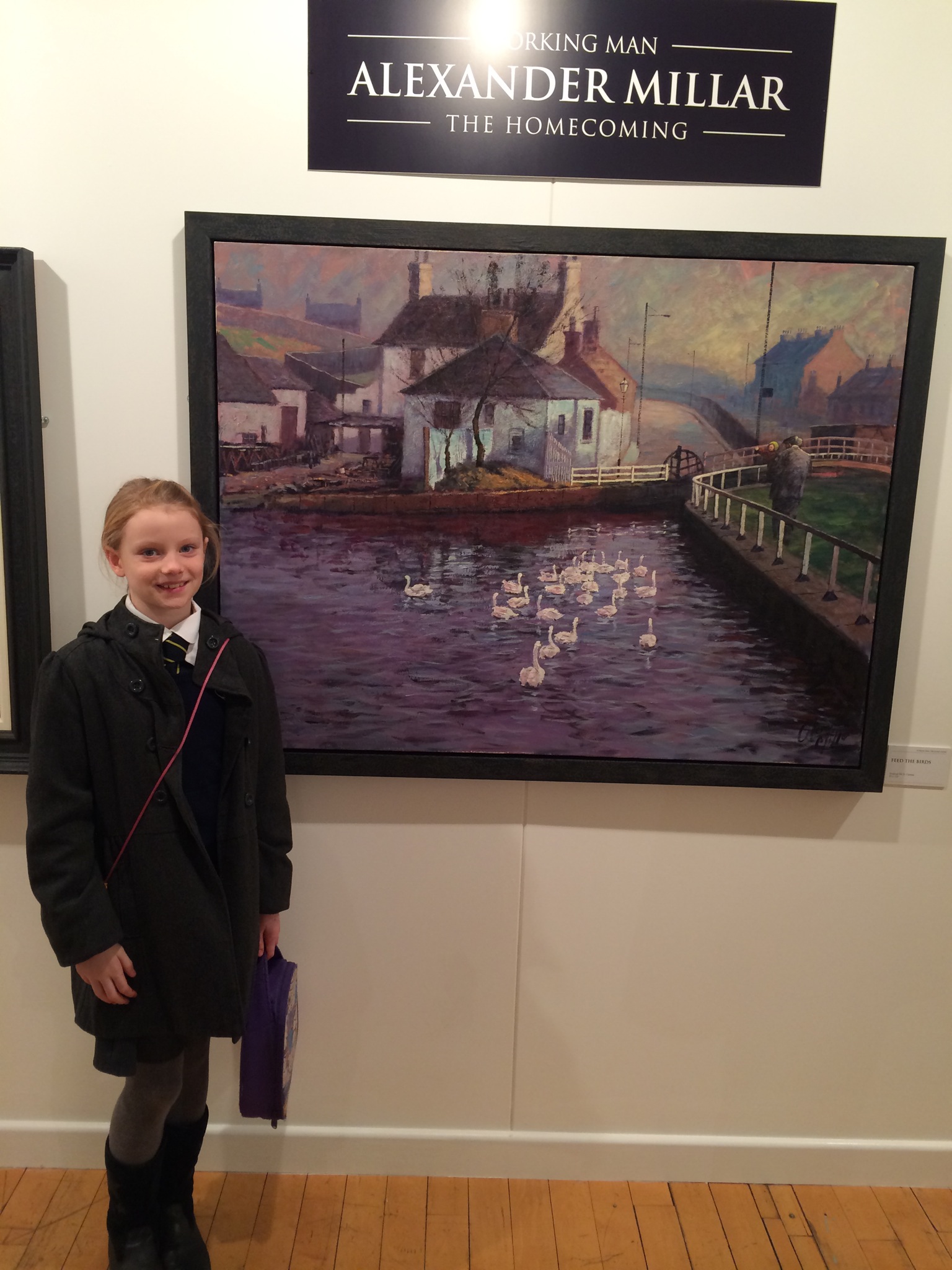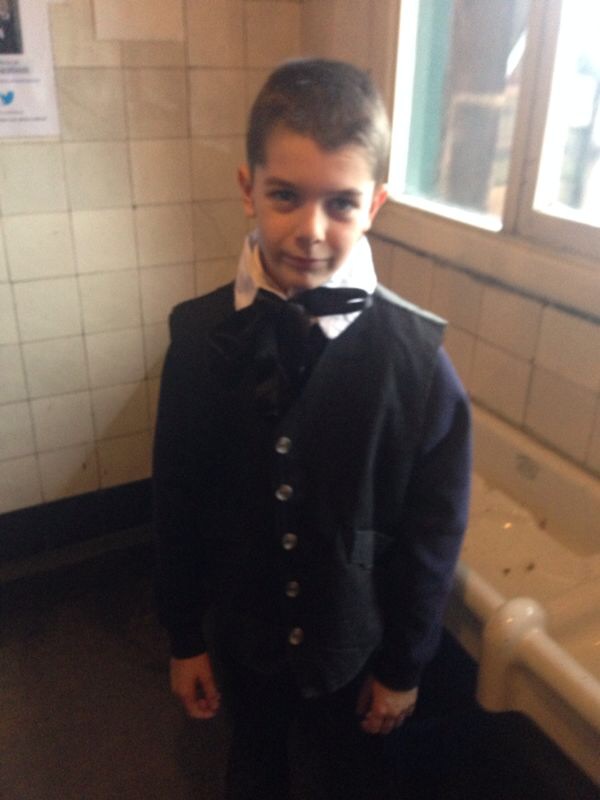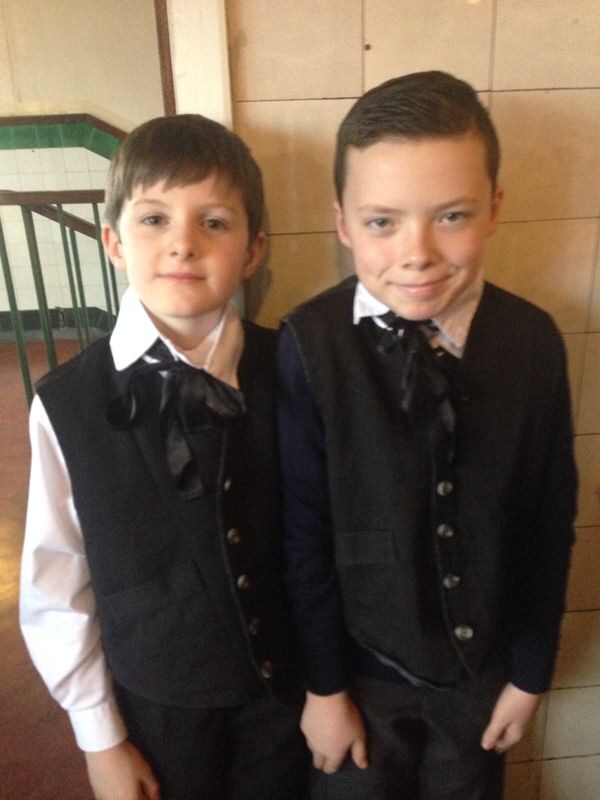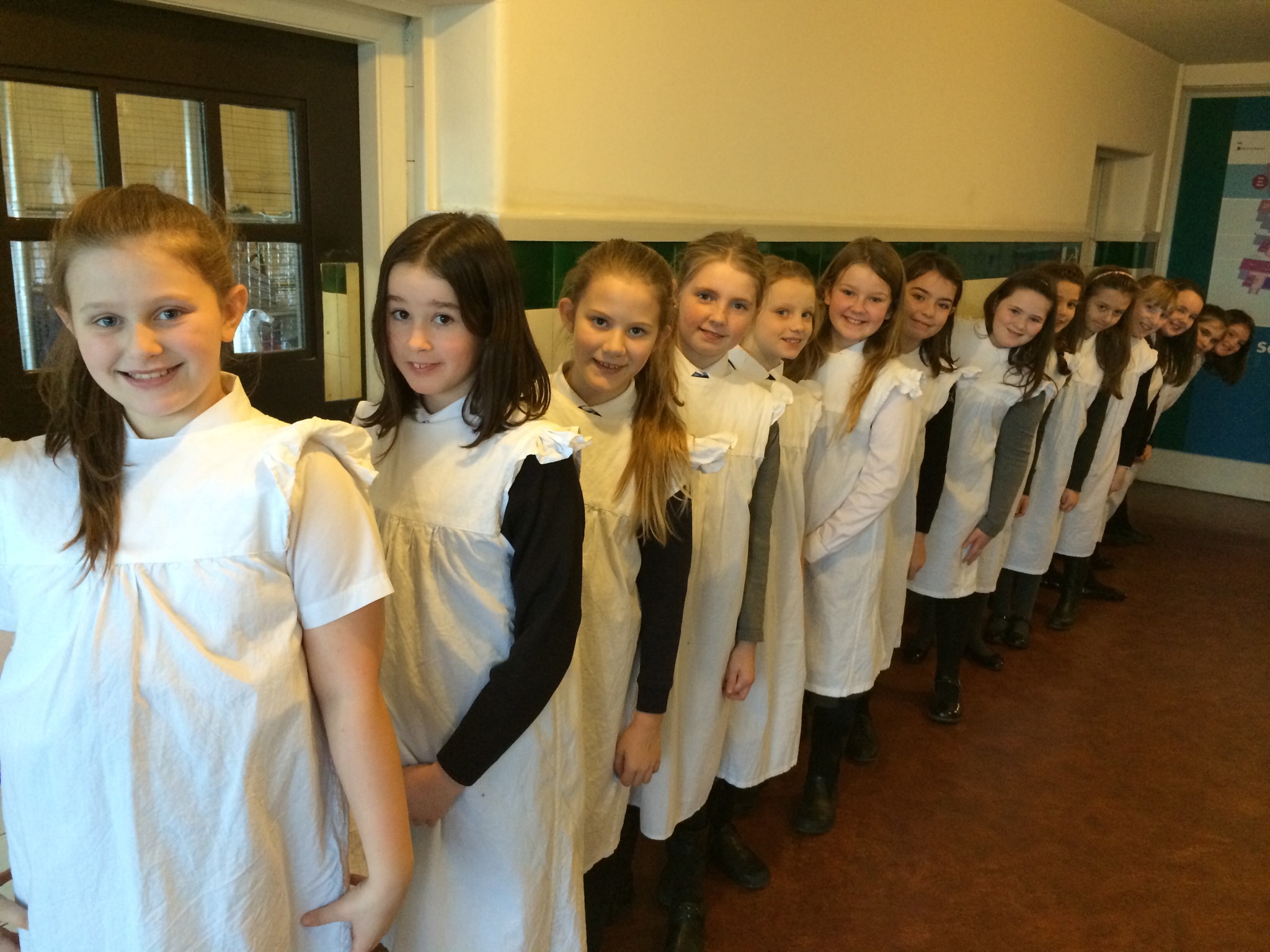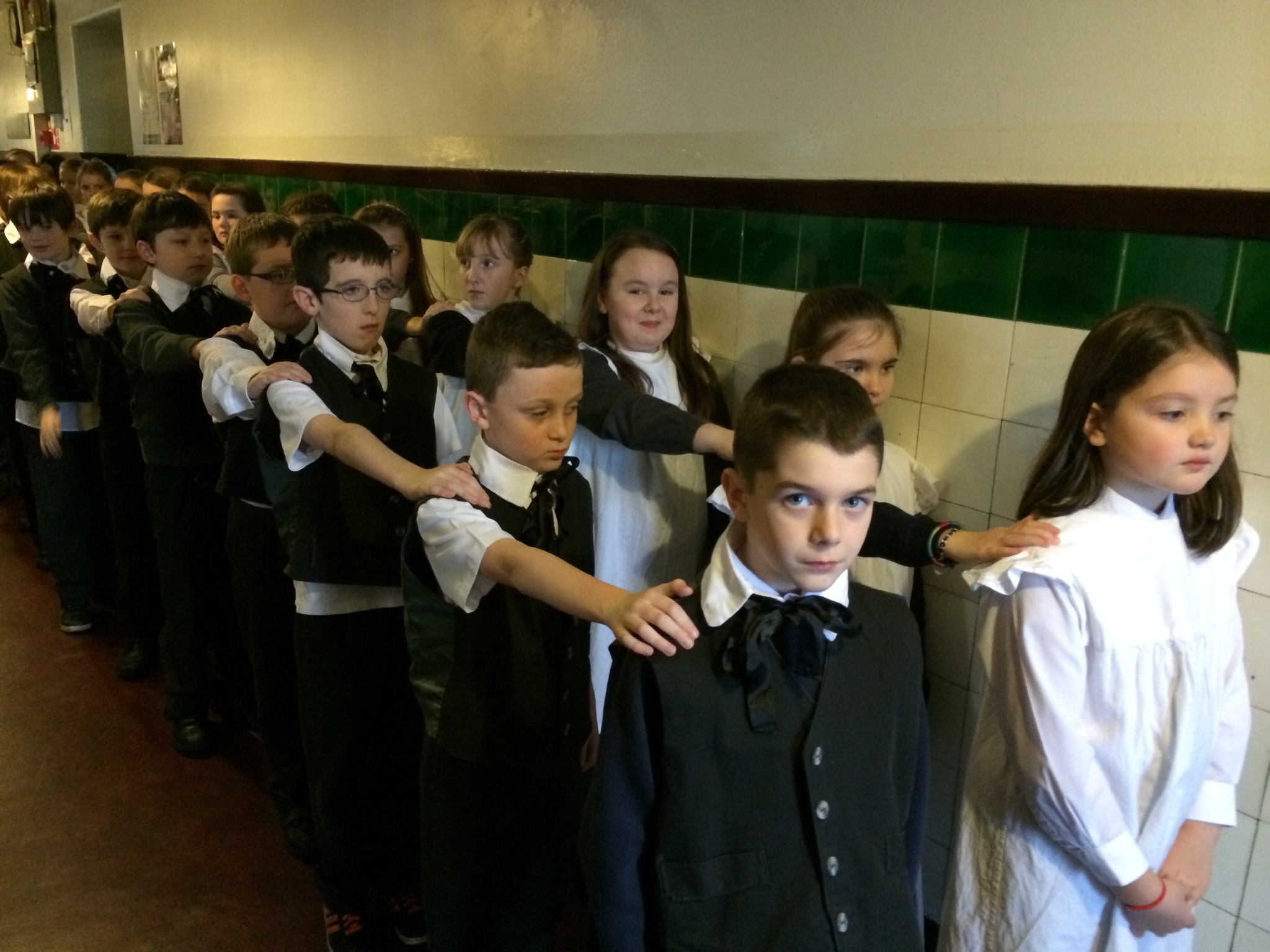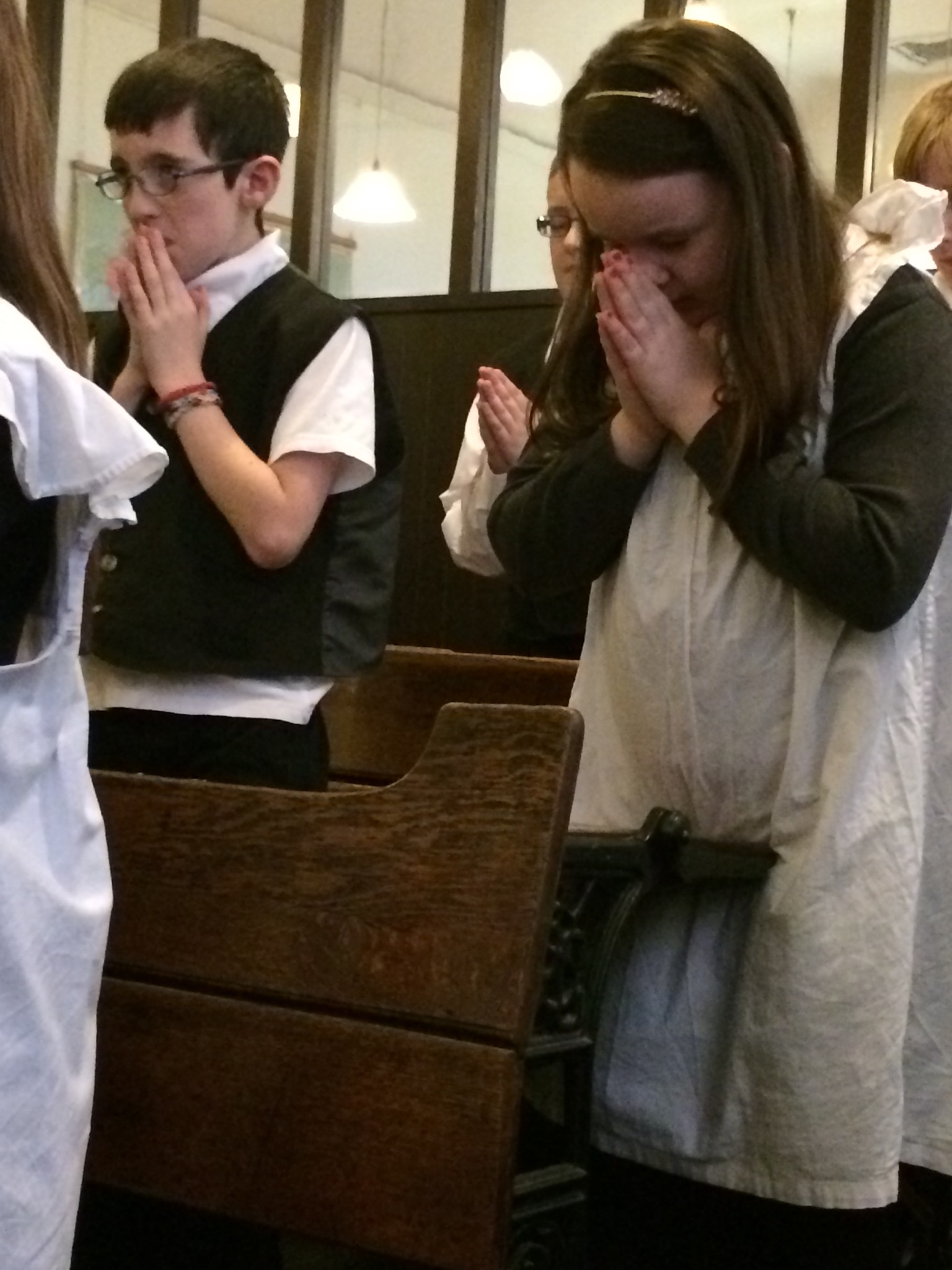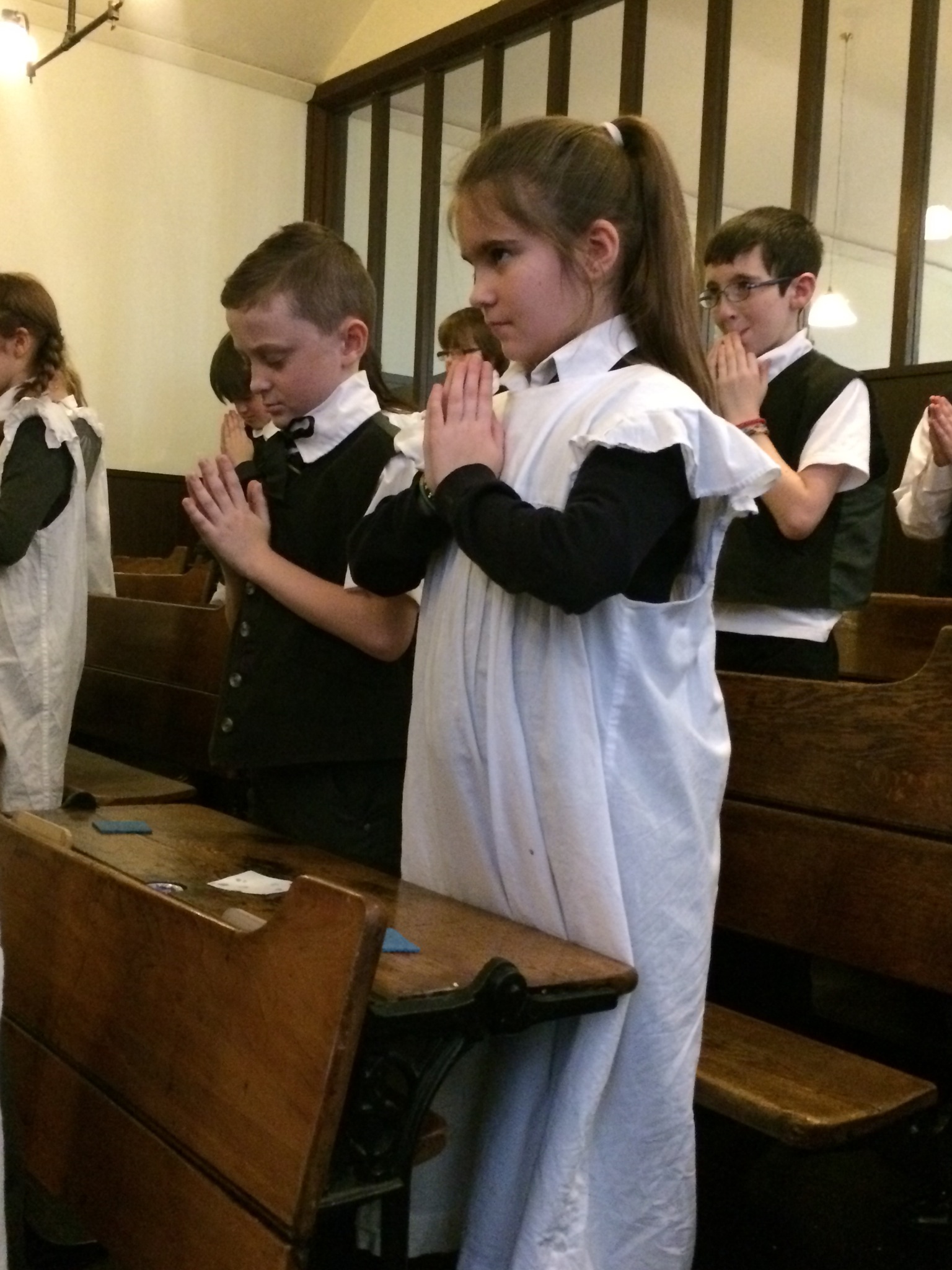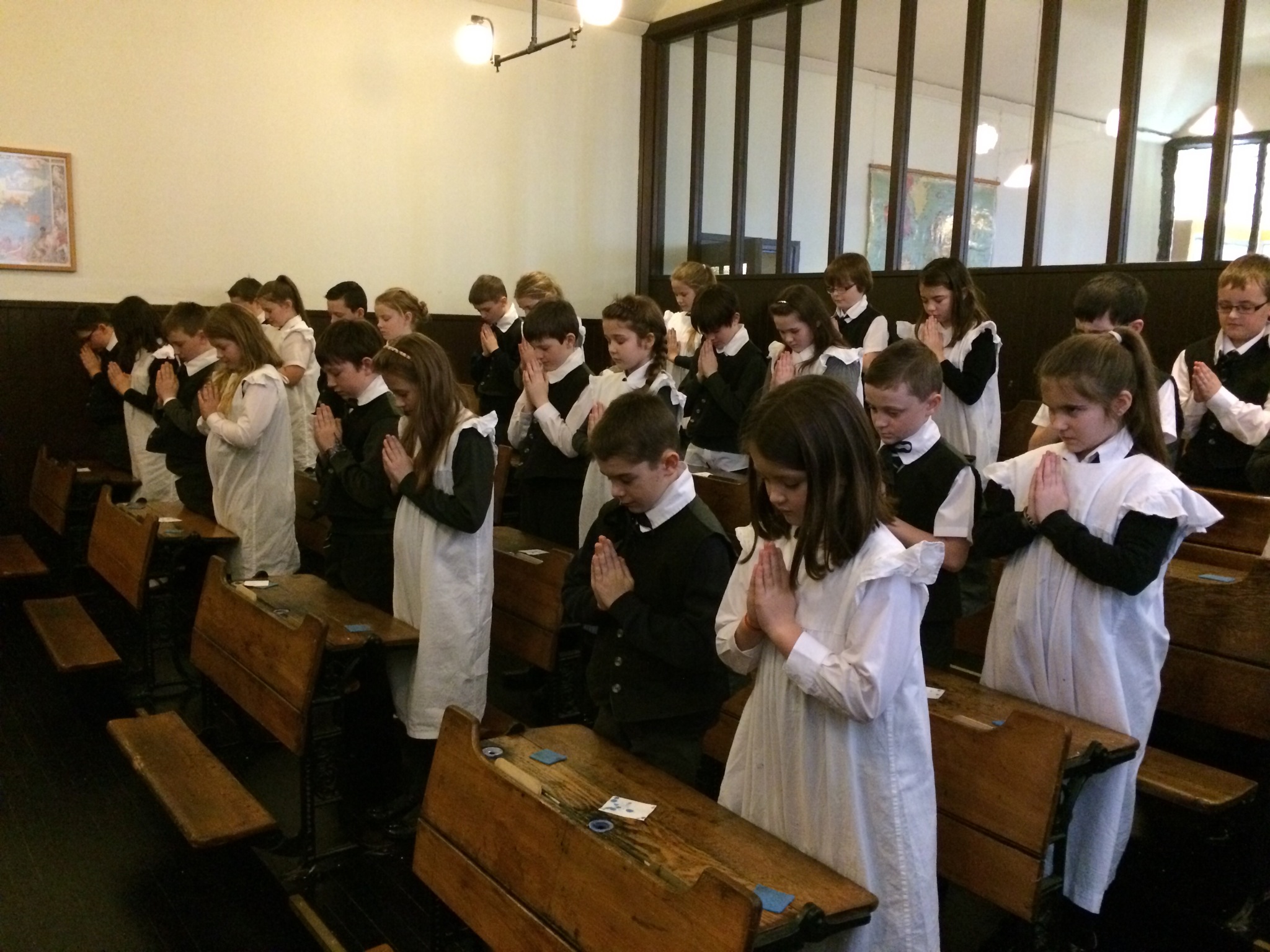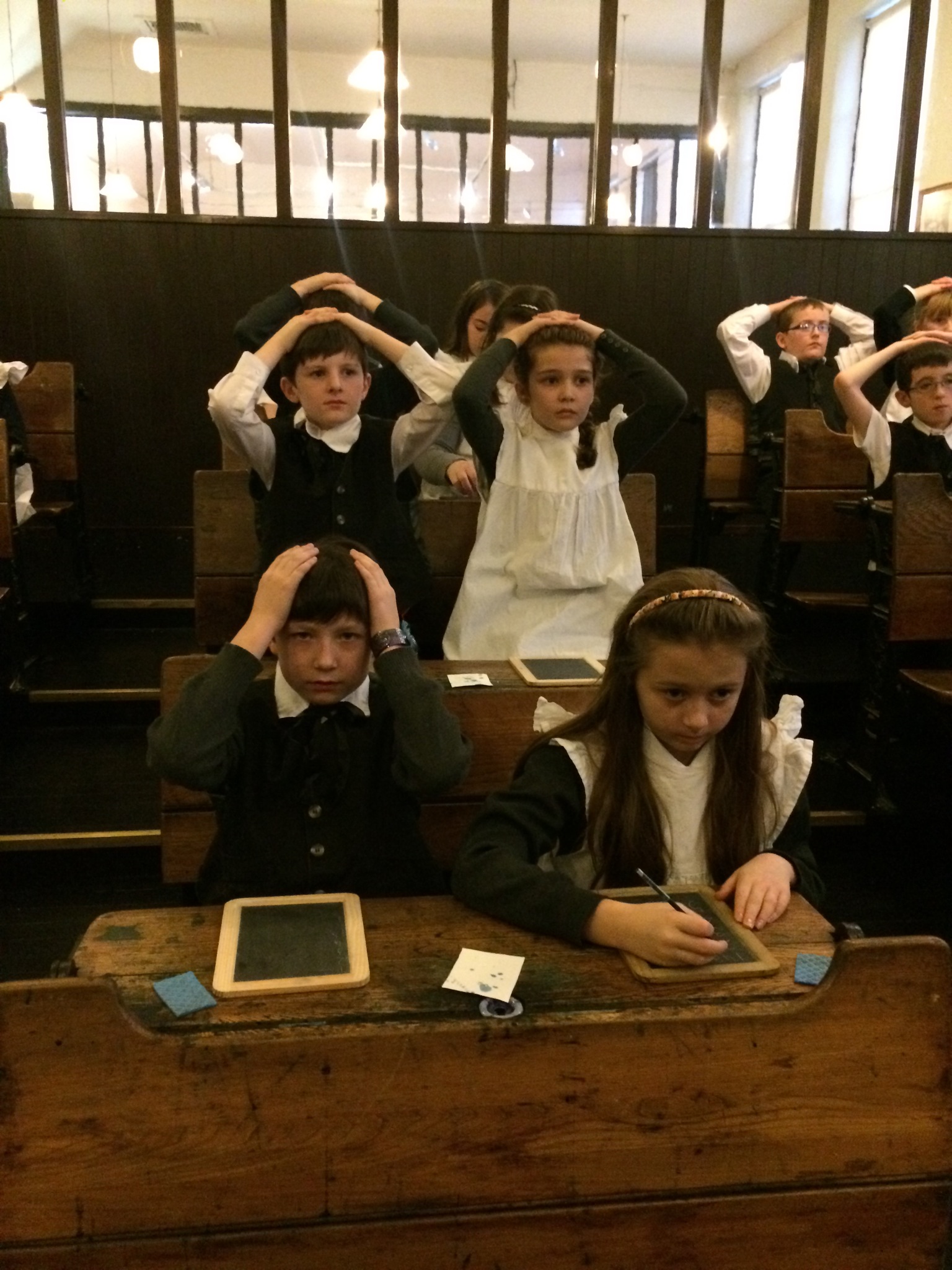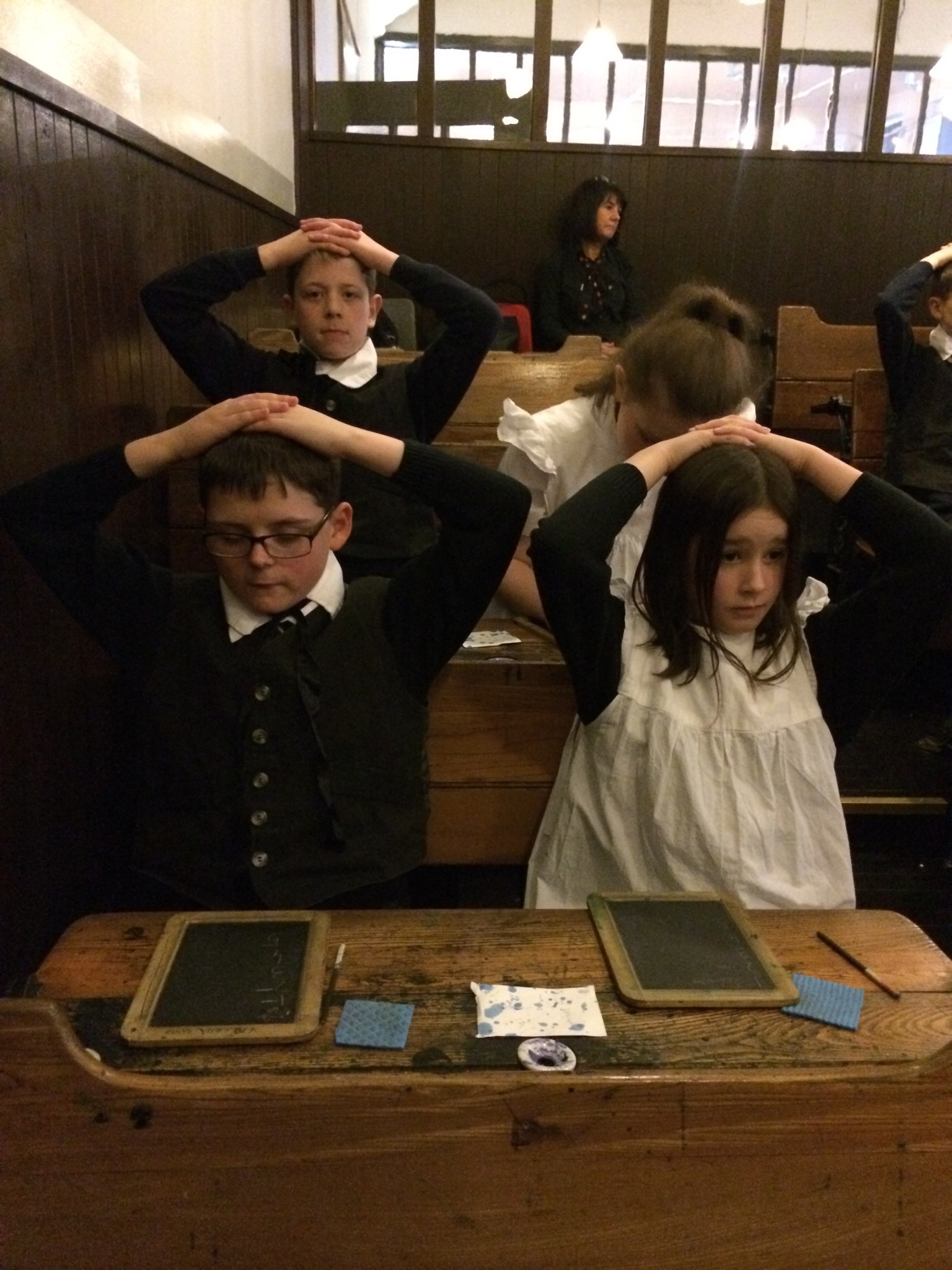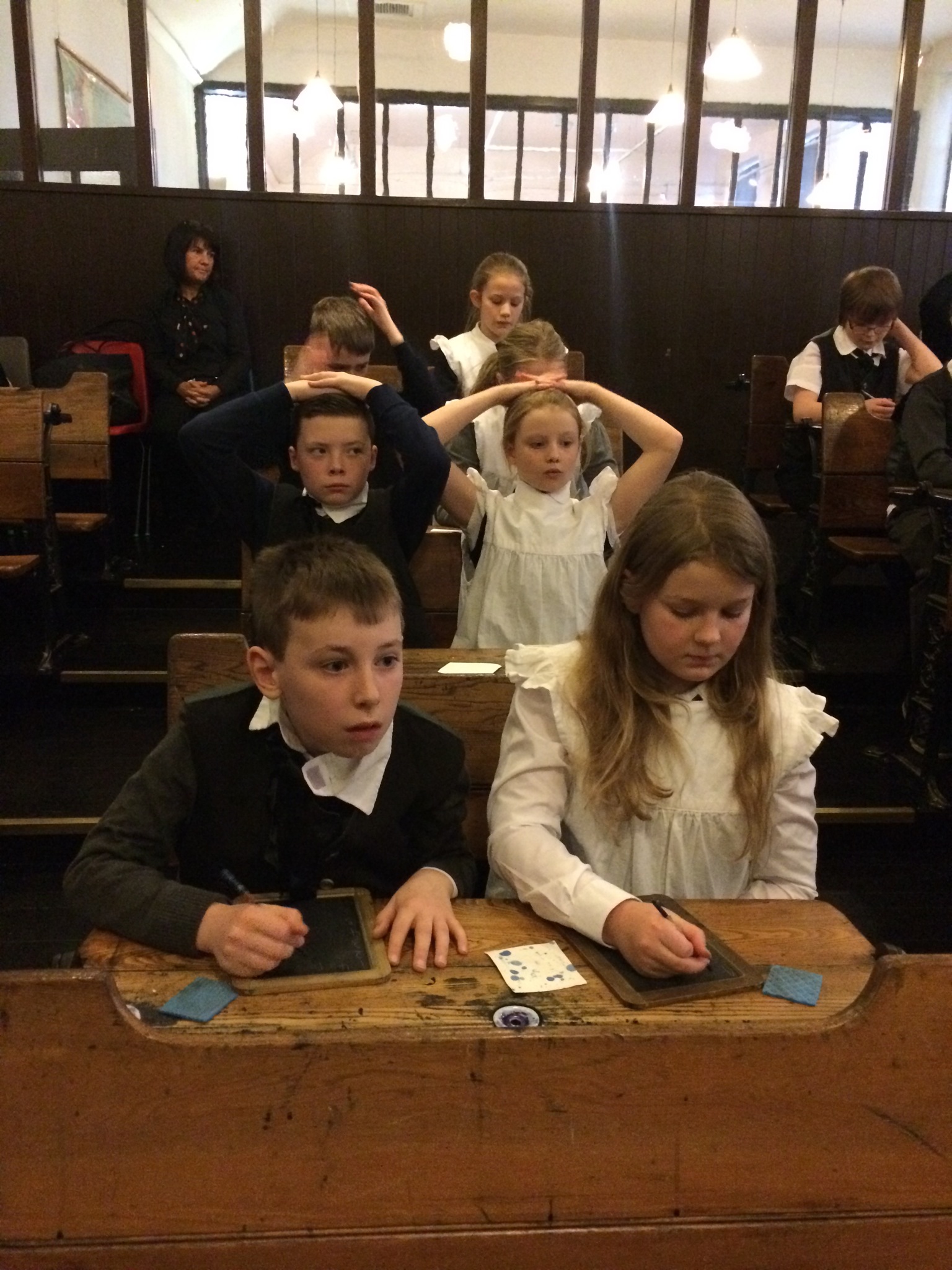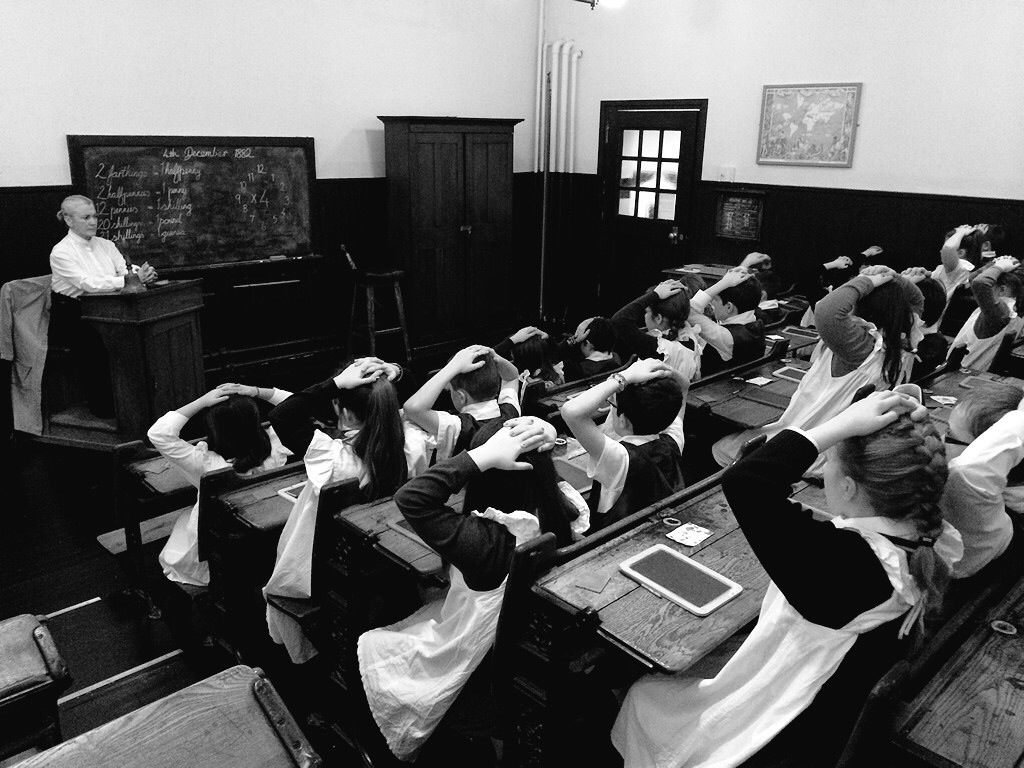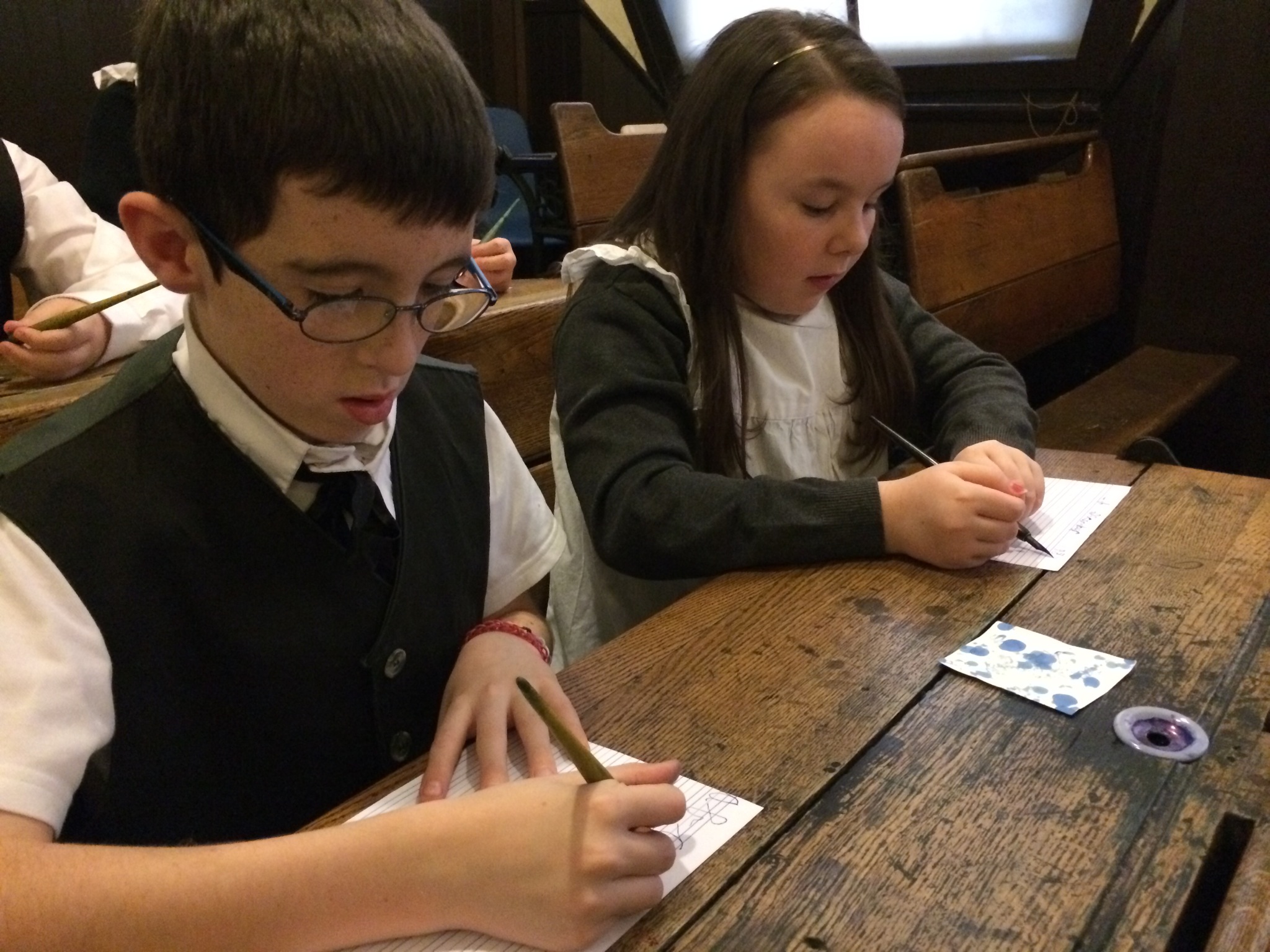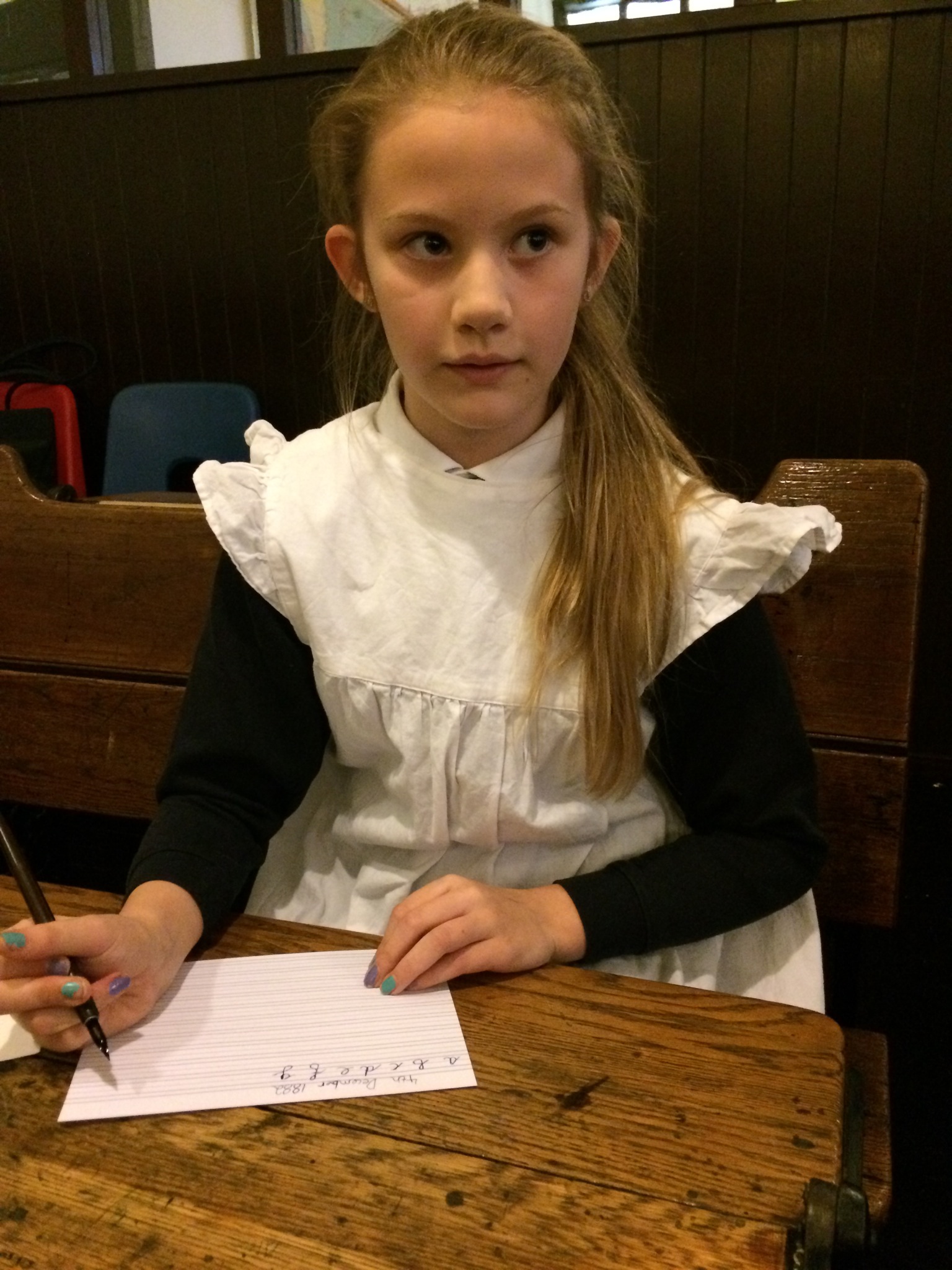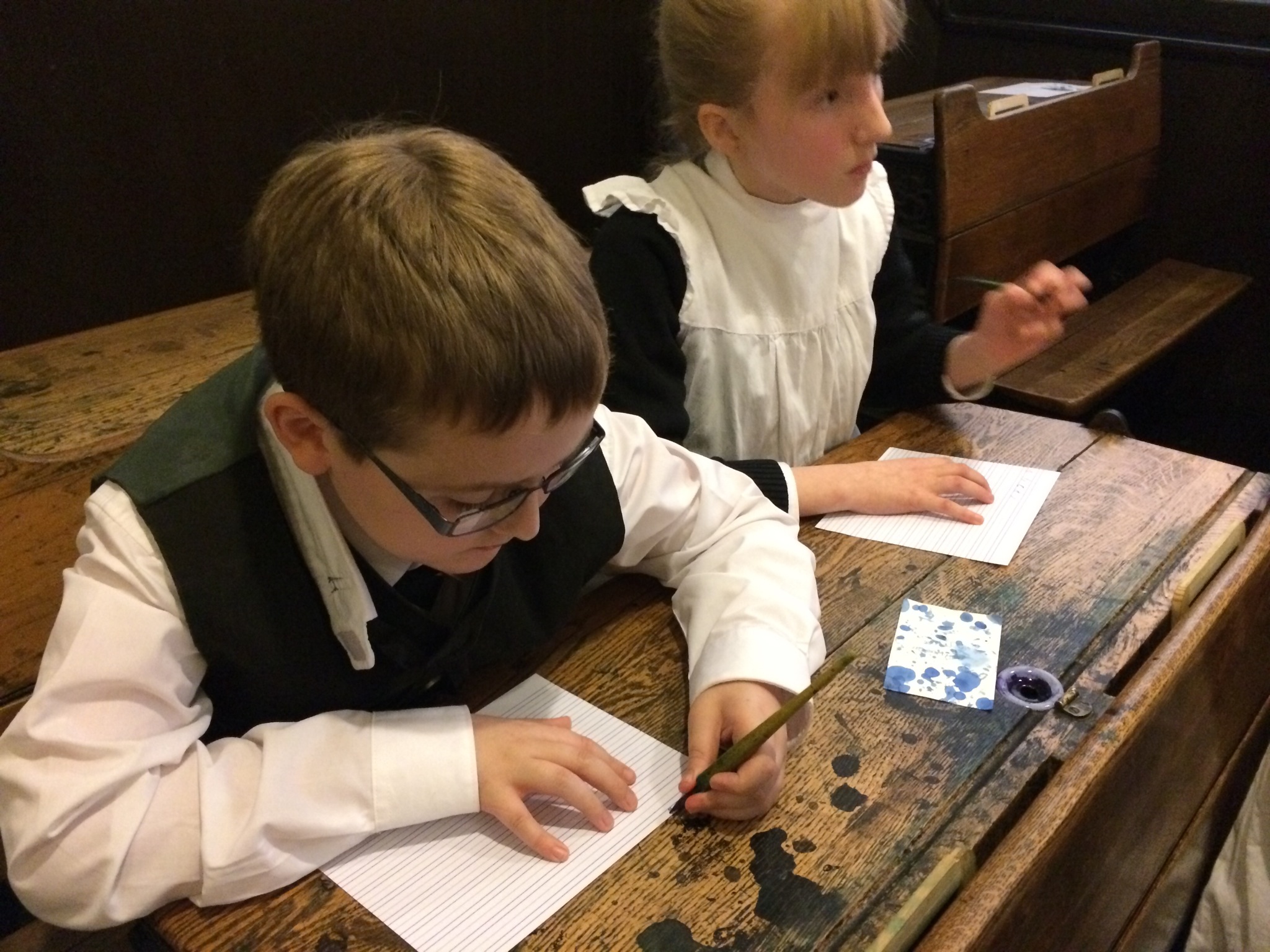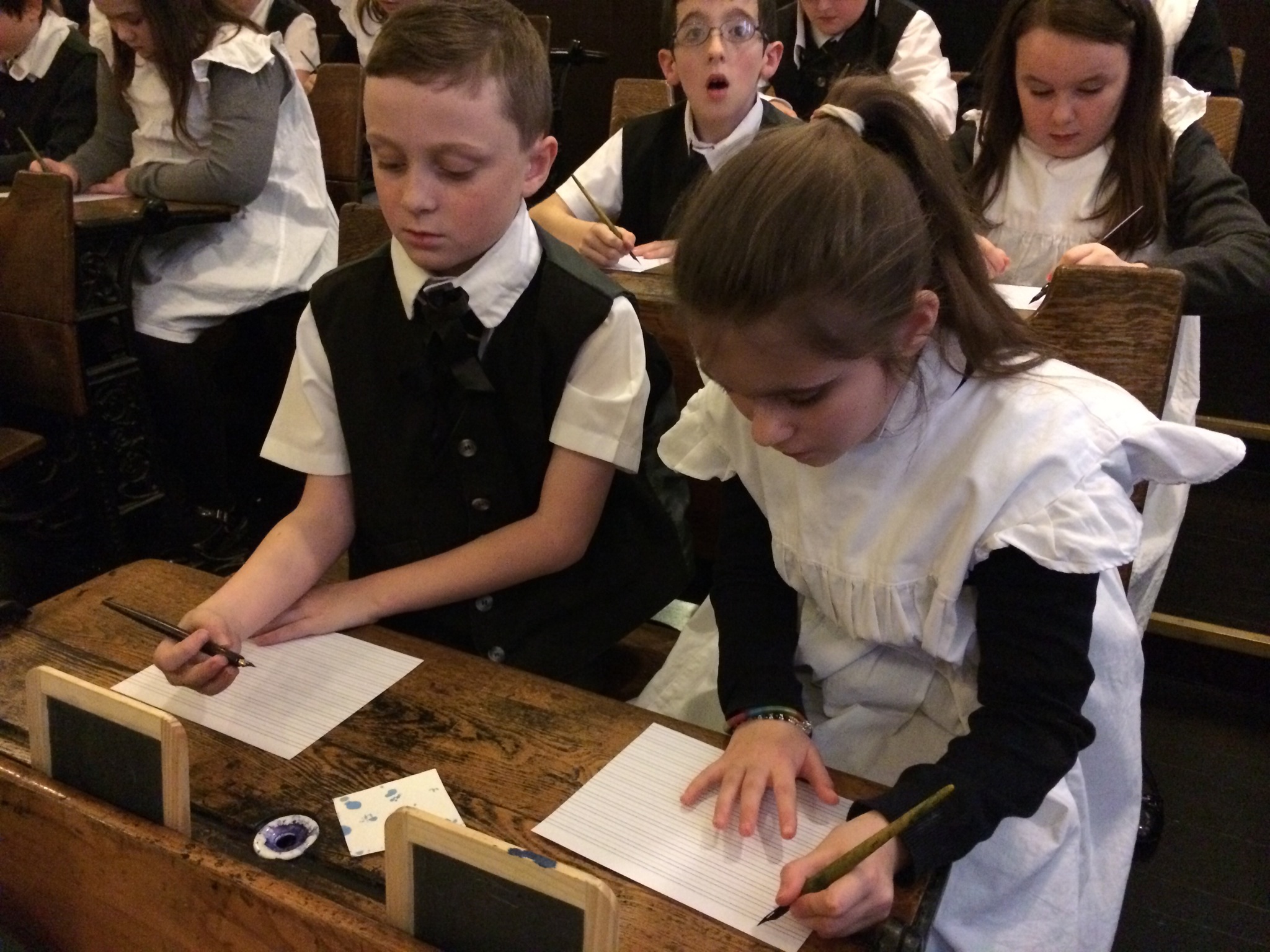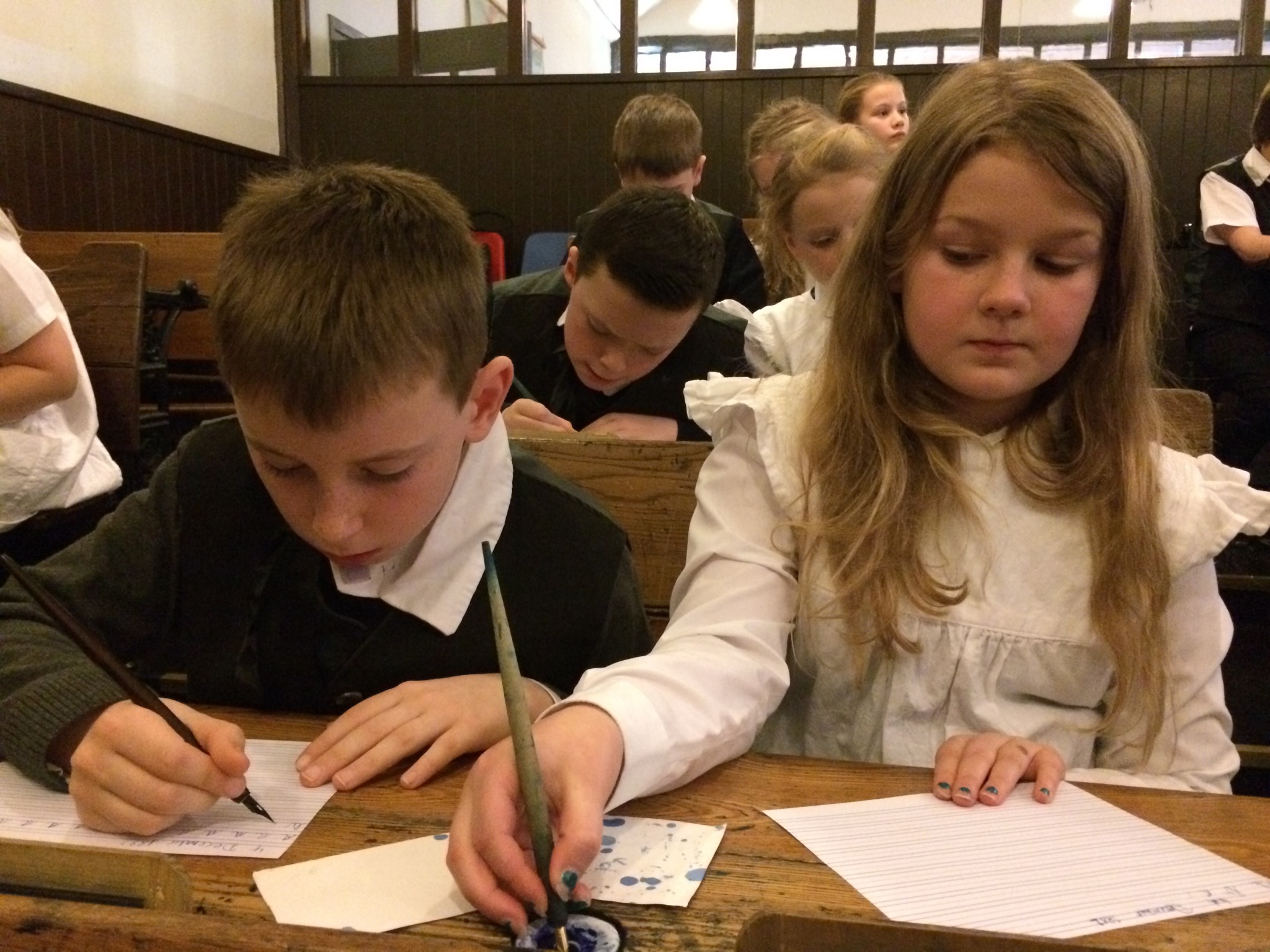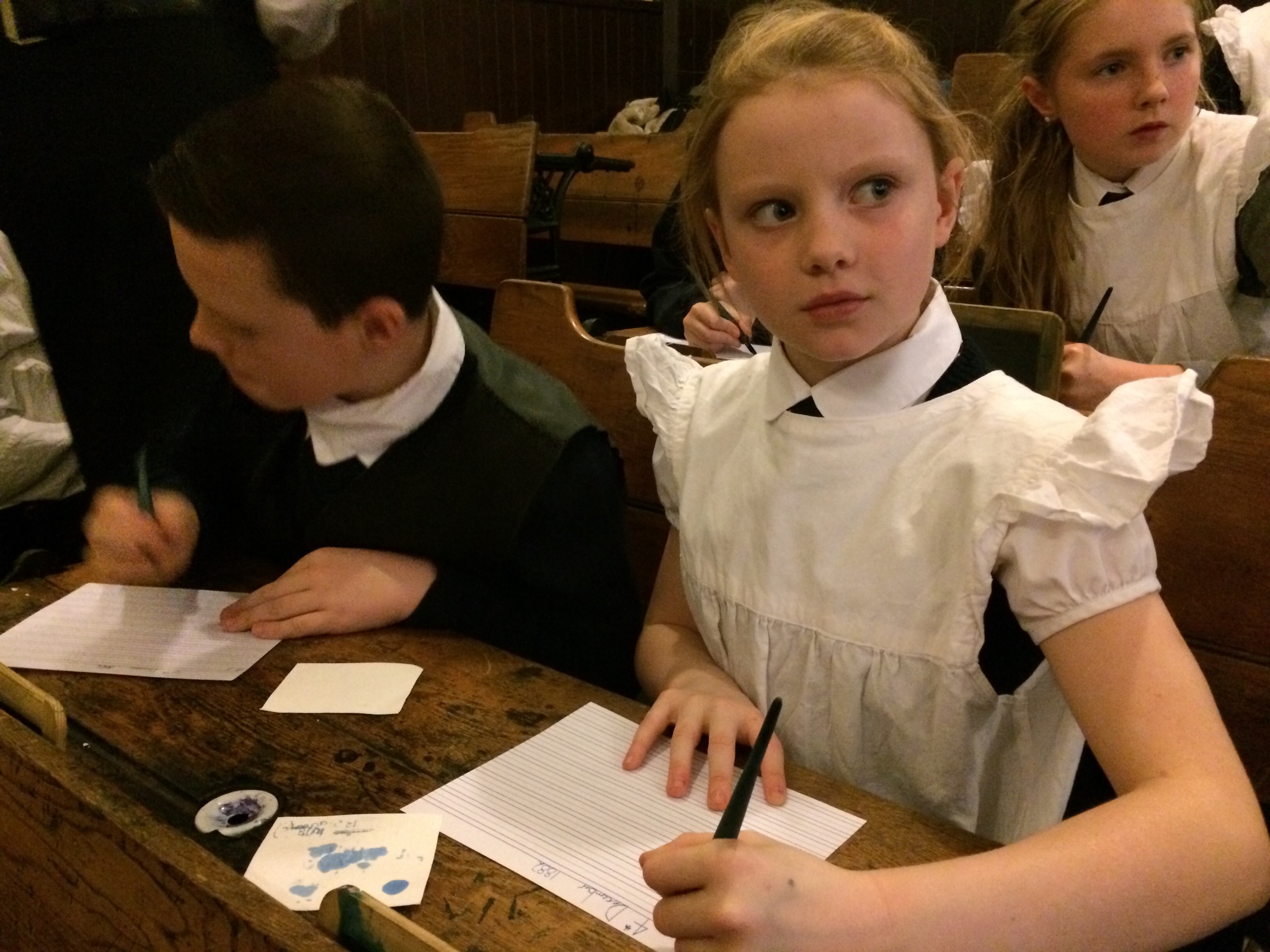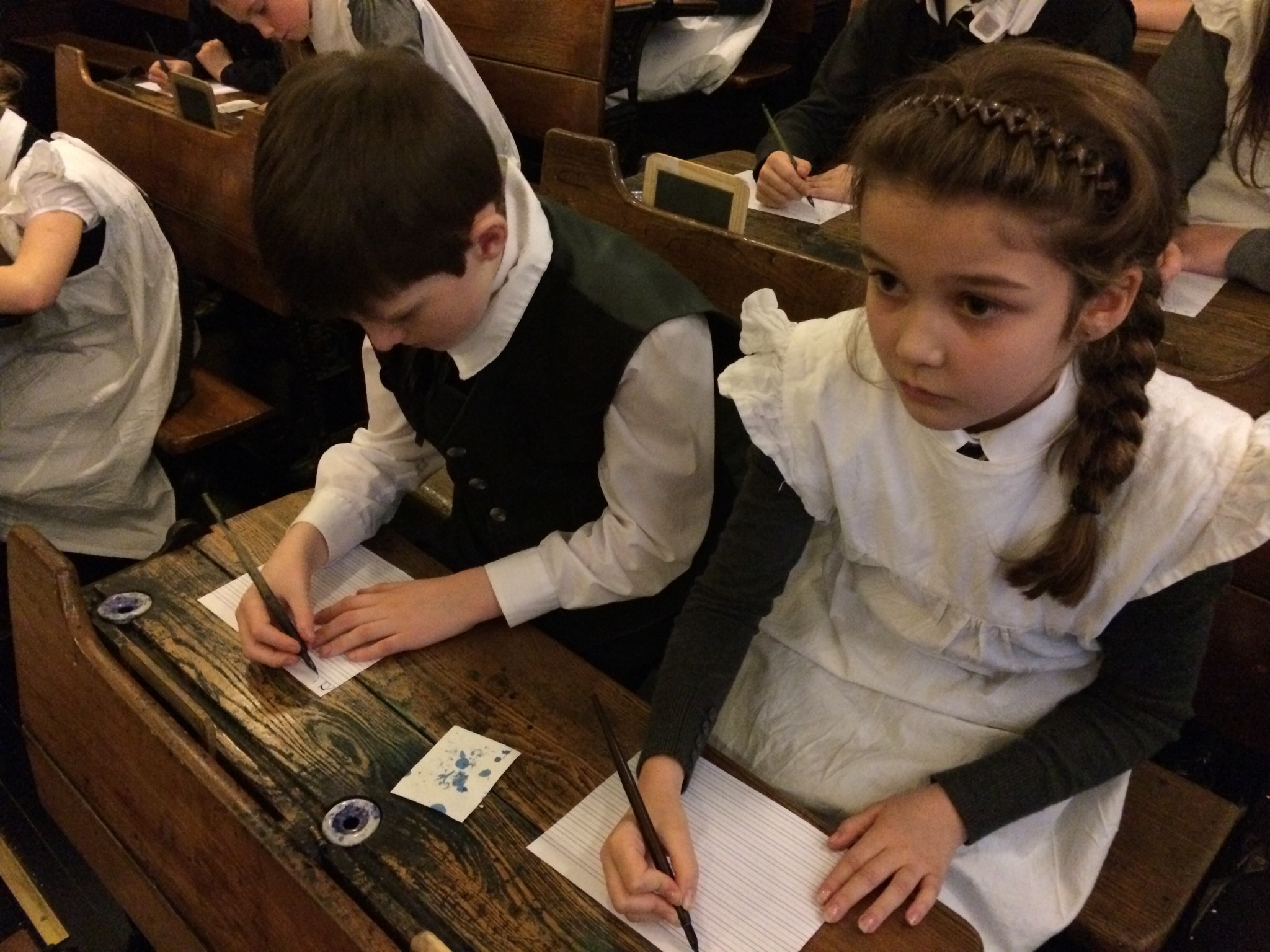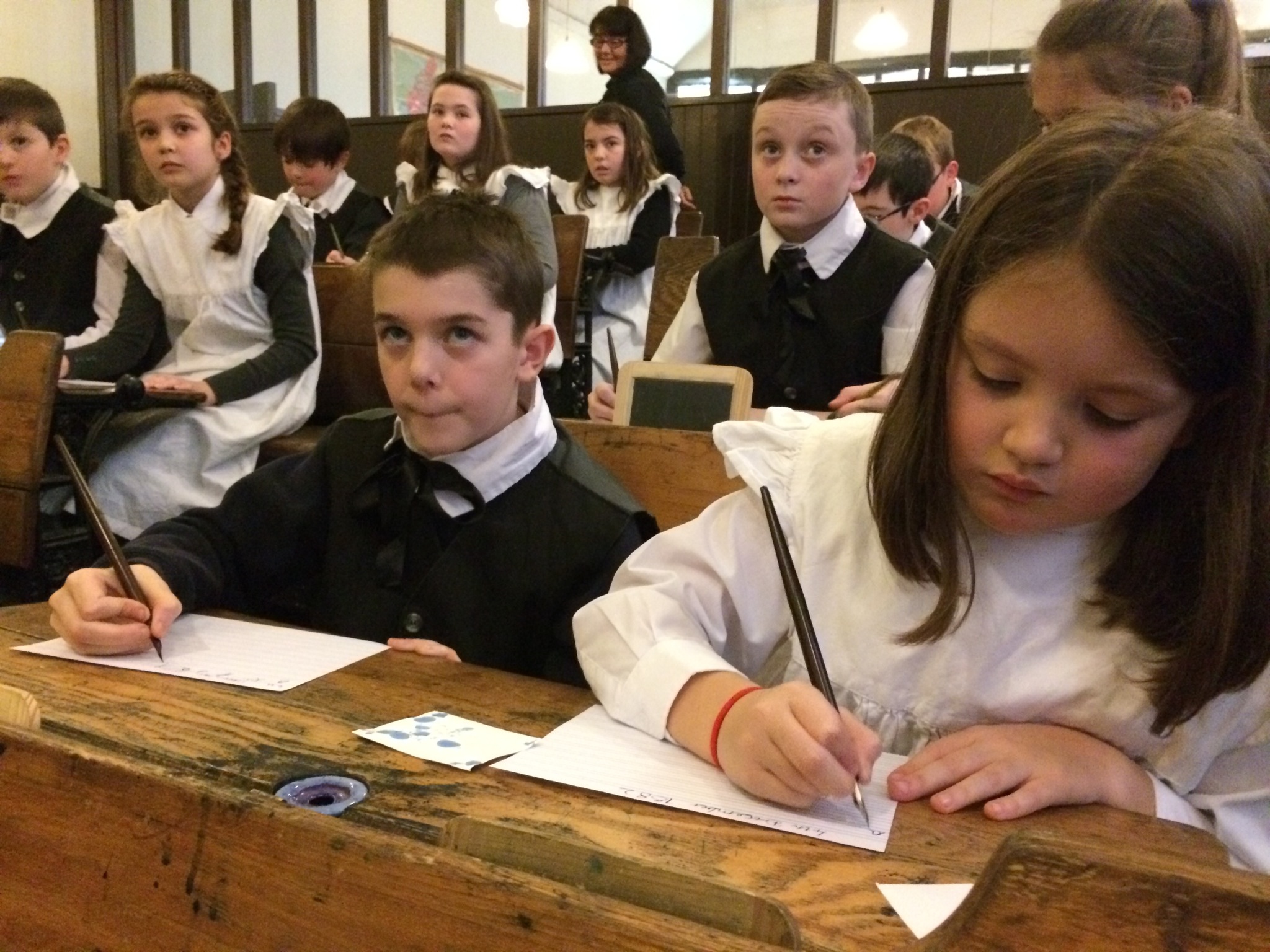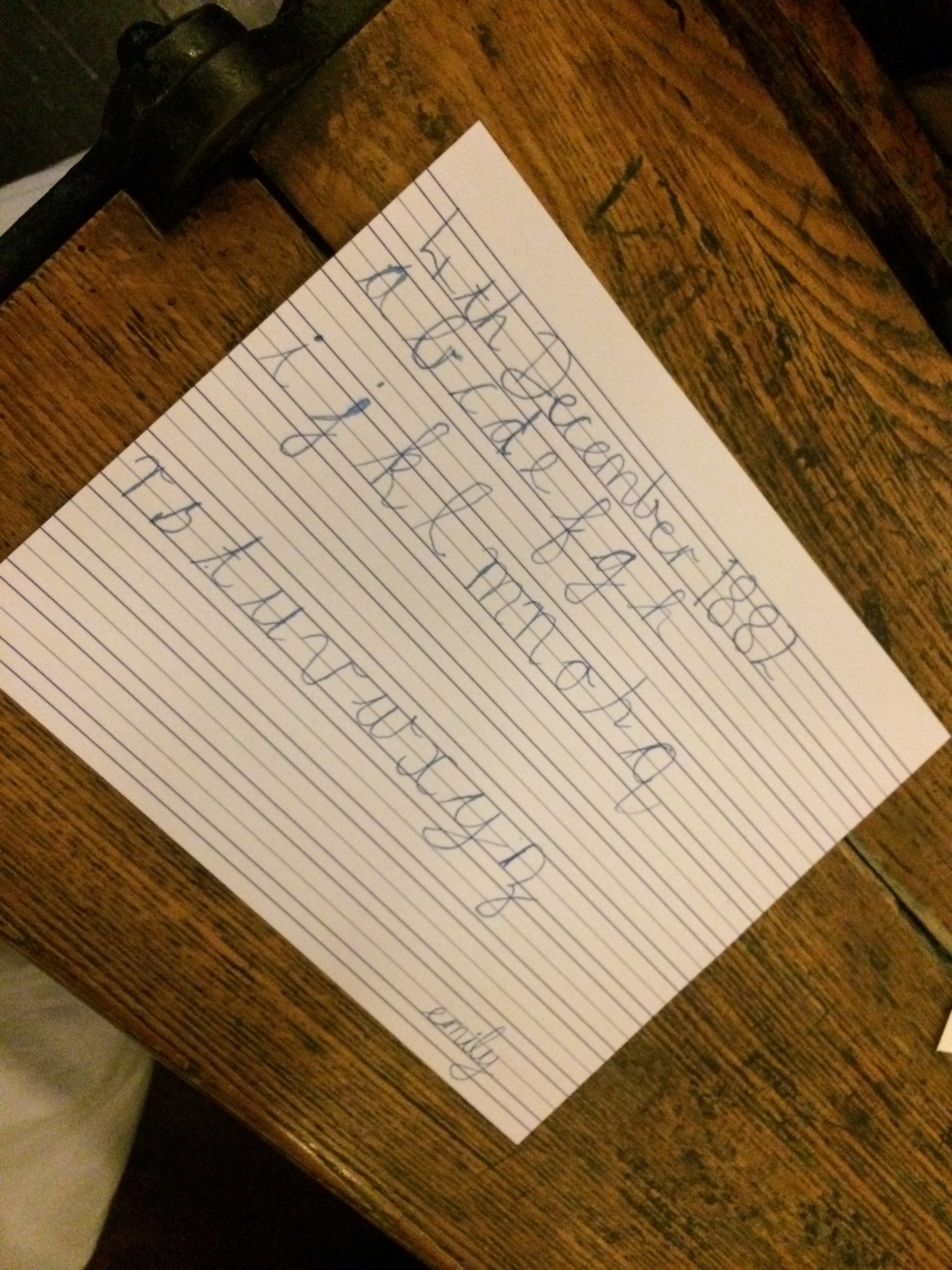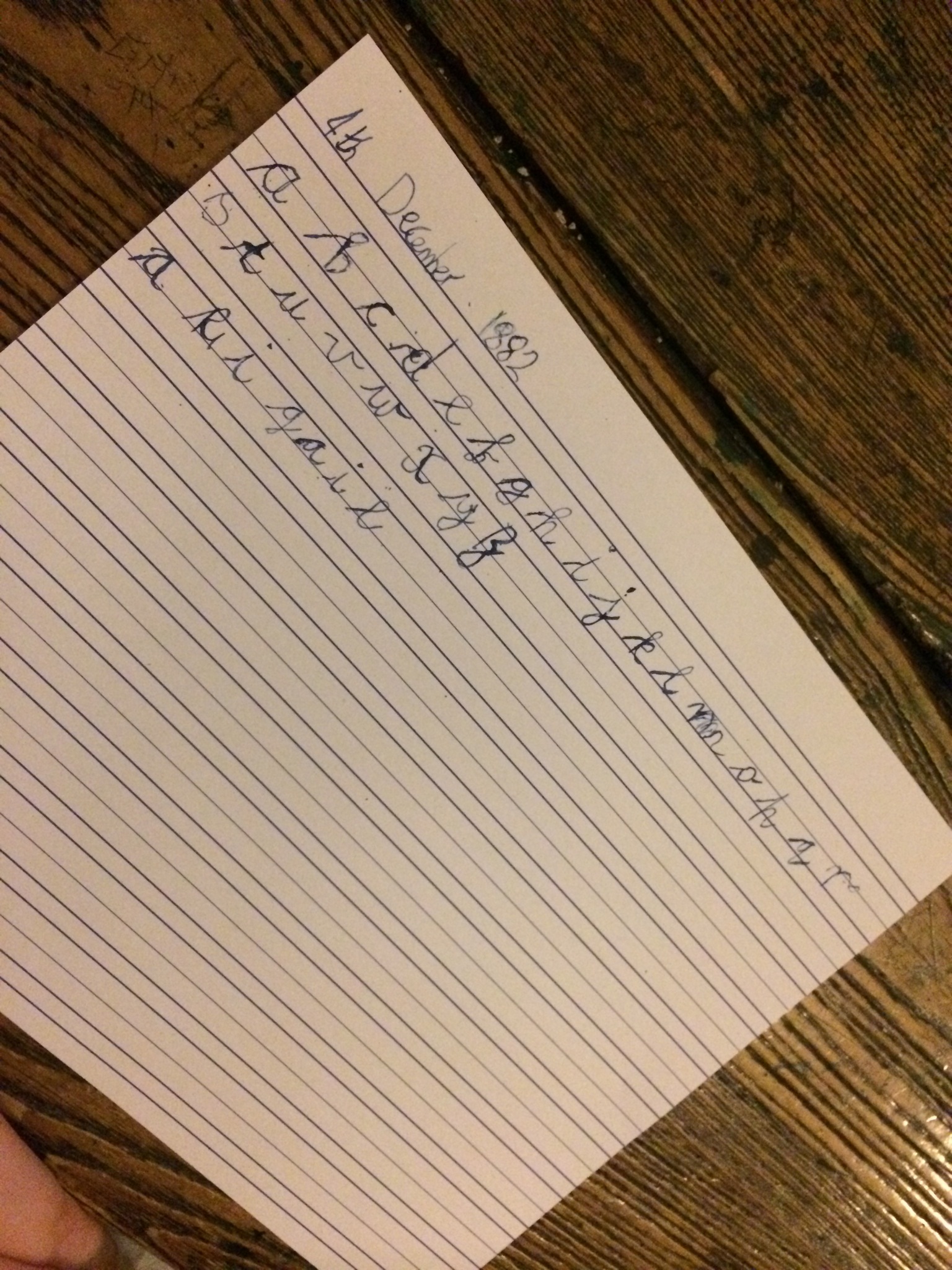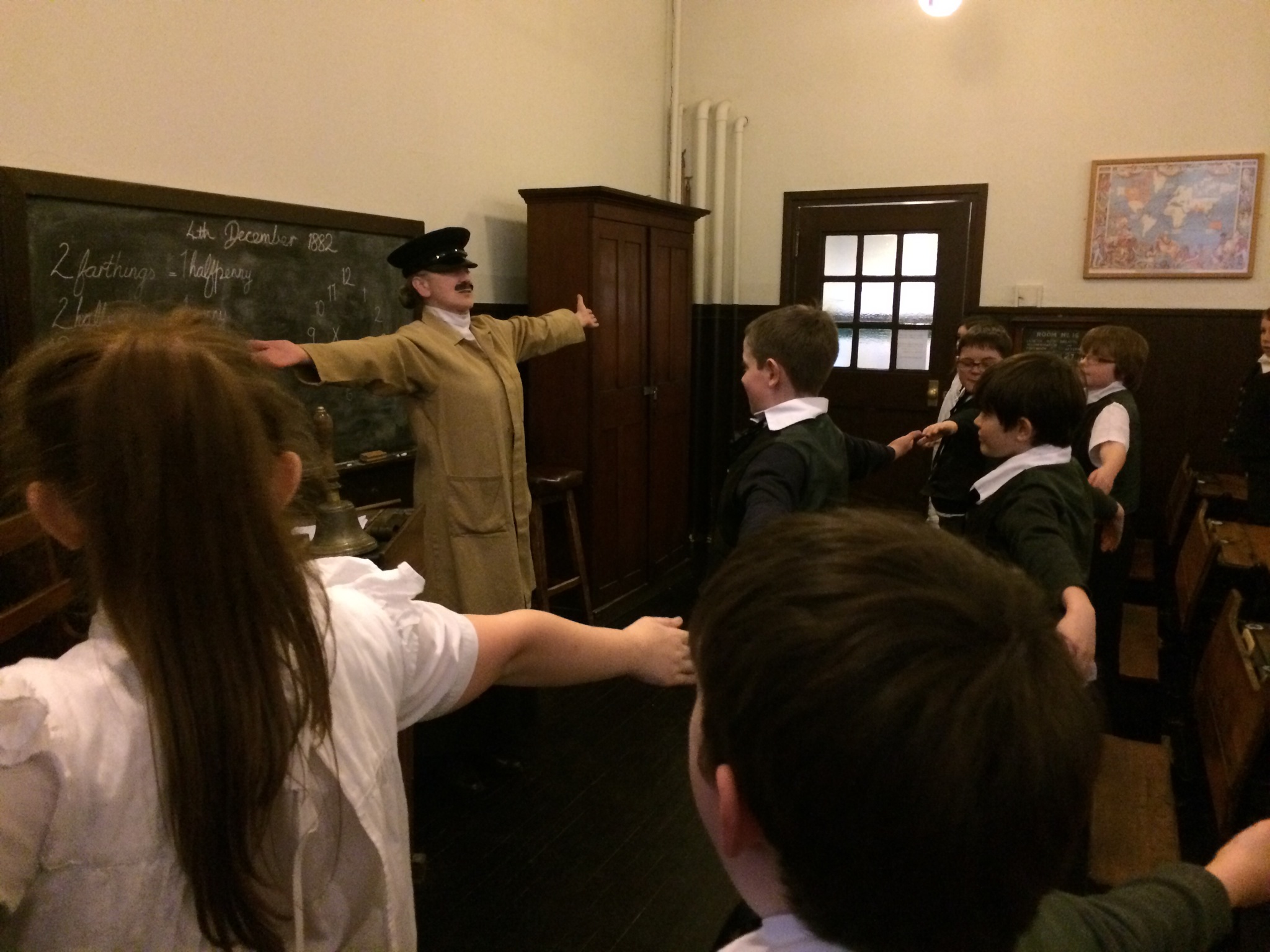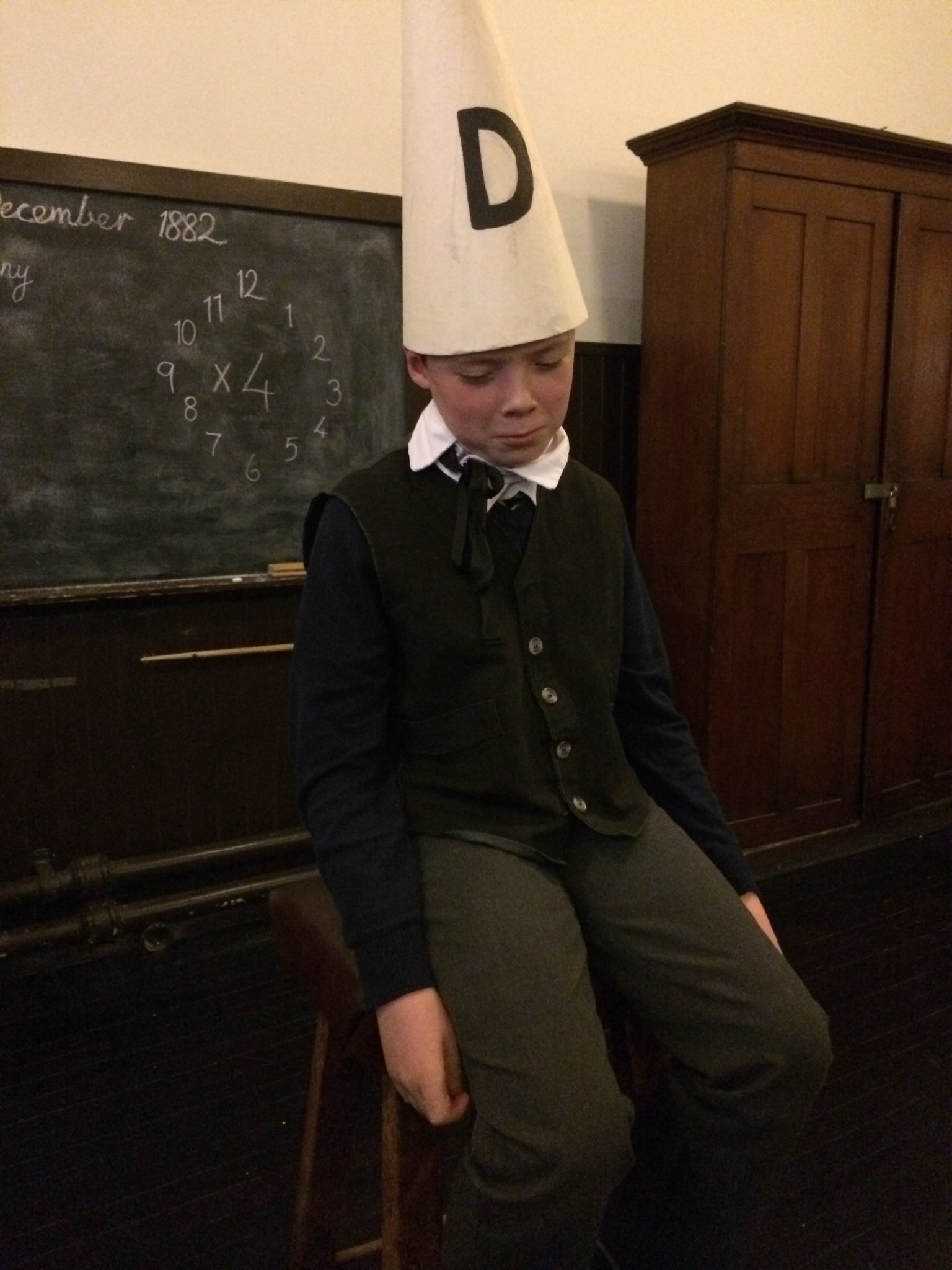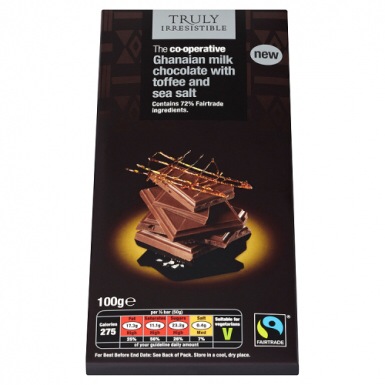We visited Scotland Street Museum to culminate all of our learning about the Victorian Era.
We were in awe of the building’s grand design which was created by the famous architect, Charles Rennie Makintosh.

We spent some time discovering many of the museum’s wide range of activities and exhibits.
Matthew purchased a Victorian game from the gift shop and was an expert in catching the ball in the cup in no time!
We visited classrooms throughout the 20th Century. Michael decided to play teacher in the 1950/60’s classroom. Pretty scary eh?
One of the most enjoyable exhibits was the art gallery. It was filled with paintings by Scottish born artist, Alexander Millar. We loved that we were able to look at some of his original work. Before we knew it, each of us had decided upon a favourite and we chattered away, giving reasons for our choices.
We enjoyed lunch before we were given the chance to participate in a Victorian classroom situation, with actress Lesley Robertson playing the teacher “Miss Baxter.”
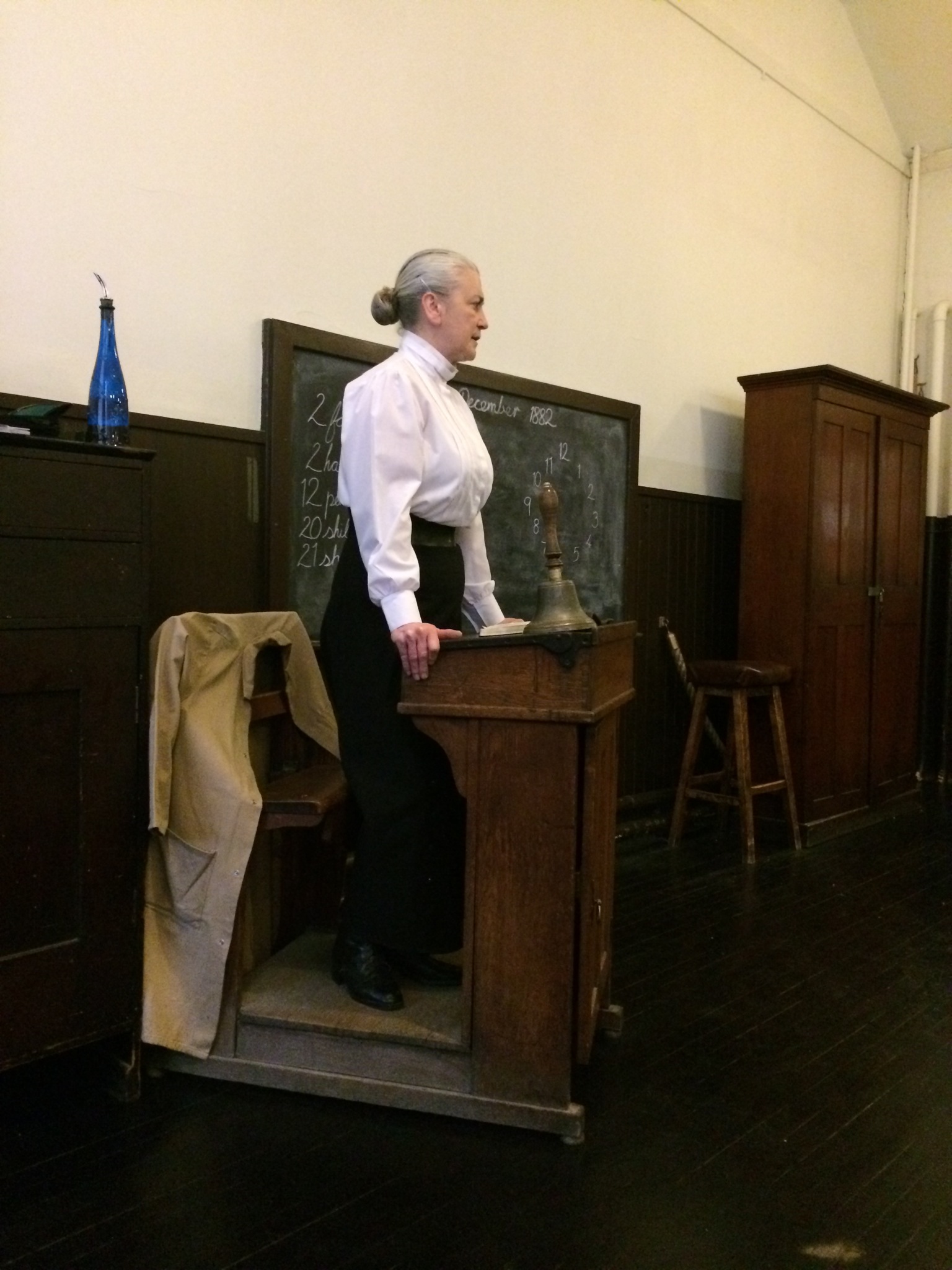
No sooner were we changed into our ‘new’ school uniforms, we had been transported back in time to the 4th December 1882…
and we were TERRIFIED!
Lessons
Victorian schools concentrated on the 3Rs, Reading wRiting and aRithmetic. Most schools also included the 4th R, religion.
First up was prayer…
Followed by arithmetic…
In a Victorian classroom, everything had to be done in a regimented way. The teacher would write things on the blackboard which was then copied into books and learned. A lot of teaching was repetition, learning the names and dates of kings and queens, or reciting the “times” table.
Victorian Child Punishment
Our nerves got the better of us and we made Miss Baxter quite cross when we gave incorrect answers to our times tables! Teachers were often strict and by modern standards very scary. Children soon learnt to do what the teacher asked, otherwise they would get a rap across the knuckles with a ruler, or a clip around the ears, struck by the belt or whipped with the dreaded cane! The Victorian teacher would use a cane to punish naughty children. The cane was given on the hand or the bottom, or sometimes given across the back of the legs. We were given such a fright when Miss Baxter whacked the belt off of one of the desks!
All sorts of things might be punished: being rude, answering back, speaking out of turn, poor work, blotting your page, in fact anything that displeased the teacher! Children who had been caned usually kept quiet about it because if their parents found out they would probably be punished again. Even left handed children were punished and made to use their right hand.
The Victorian Teacher
Teaching was often the job of unmarried ladies (that’s why you called the teacher Miss or Ma’am), and when you married you stopped teaching. Fewer men taught because the pay was poor.
Equipment
For every teacher the most vital piece of equipment was the blackboard. This could be used so that their pupils could take down information or practice imitating the teacher’s handwriting.
Children started to learn to write using a slate – a sort of small blackboard. They wrote on it with a sharpened piece of slate called a slate pencil.
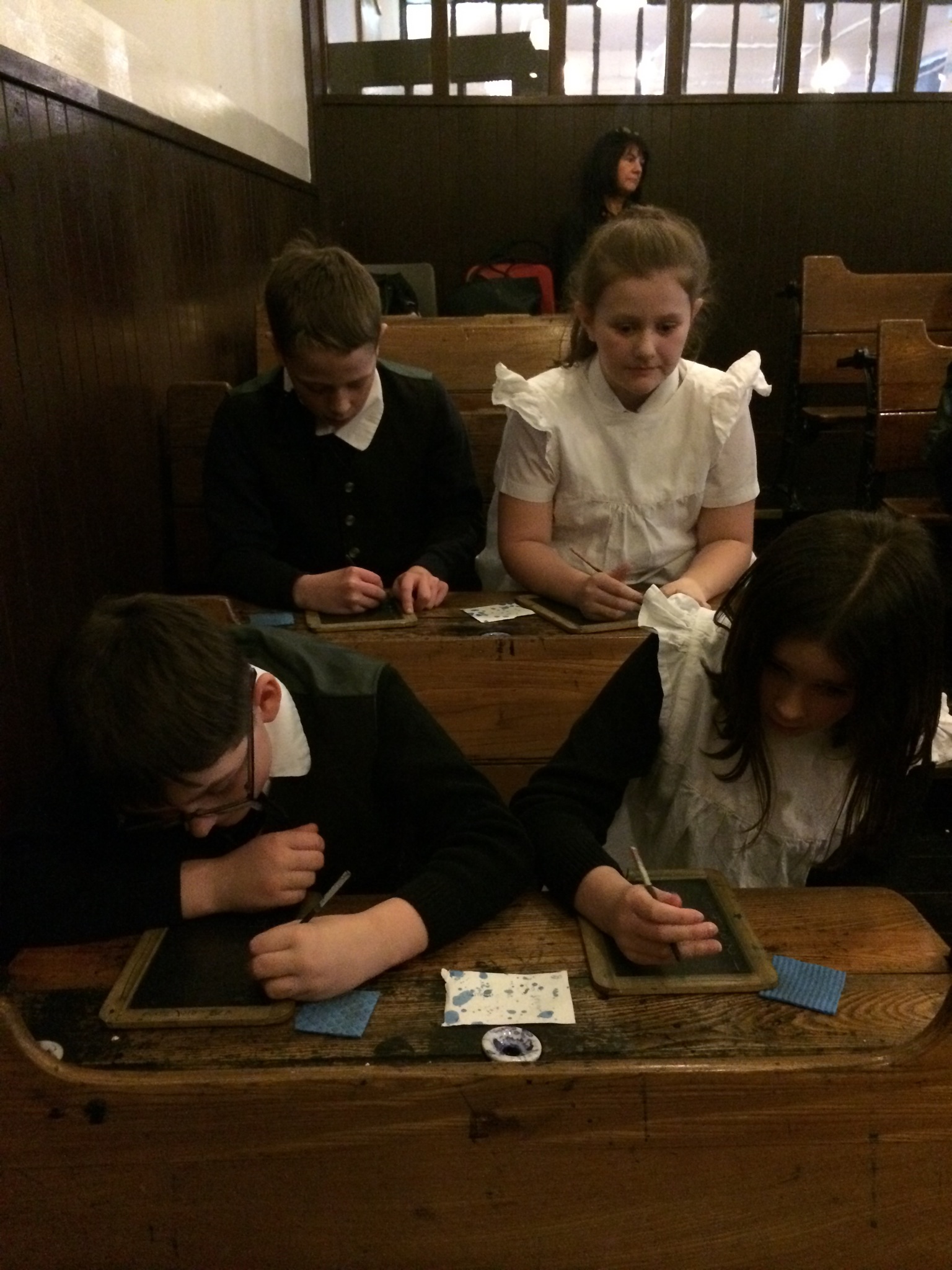
Pupils brought a piece of sponge or a rag from home to clean the slate, or some just used their sleeve!
As they got older children would write on paper using a dip pen and blue-black ink from out of an inkwell.
A book with ruled lines was used for handwriting practice, the copybook. The first line was printed, or copied carefully from the blackboard, then the entire page was filled with identical lines.
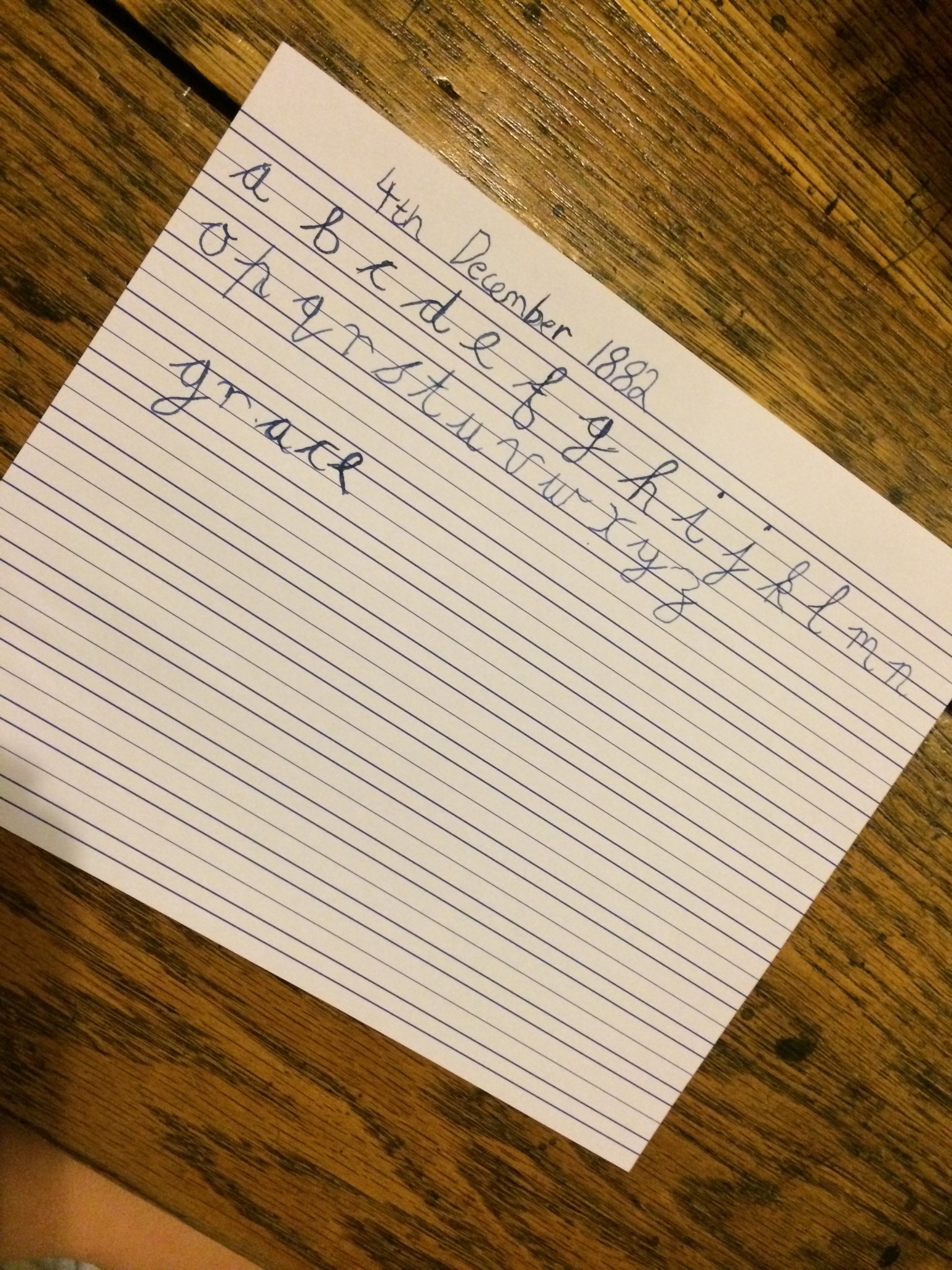 If a mistake was made it stood out glaringly, and it is from this that we say you “blot your copybook” when you make a serious mistake.
If a mistake was made it stood out glaringly, and it is from this that we say you “blot your copybook” when you make a serious mistake.
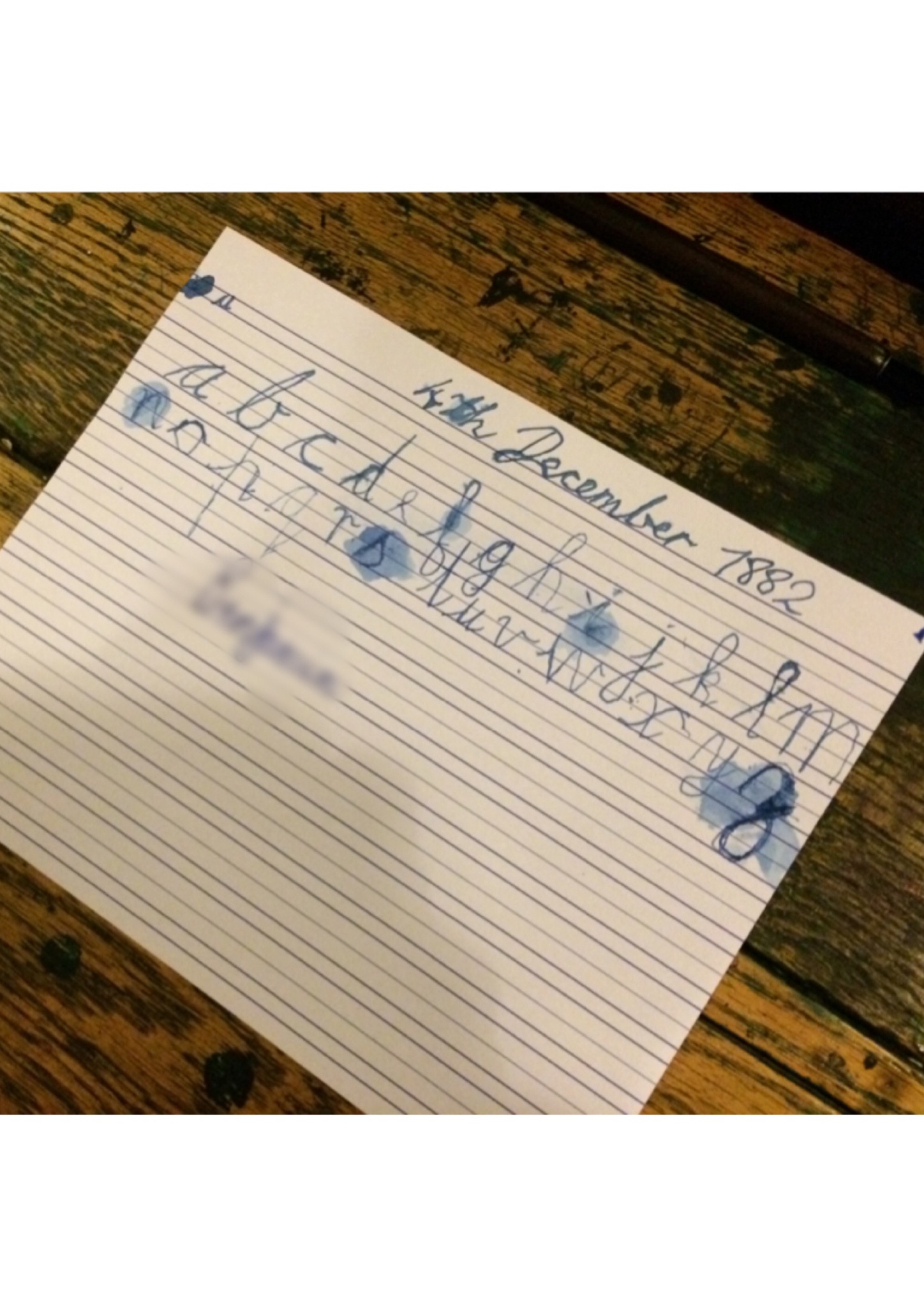
Another regular activity was drill, which was the Victorian equivalent of what we now call PE. This might involve running, jumping, stretching and lifting weights, and was often accompanied by music.
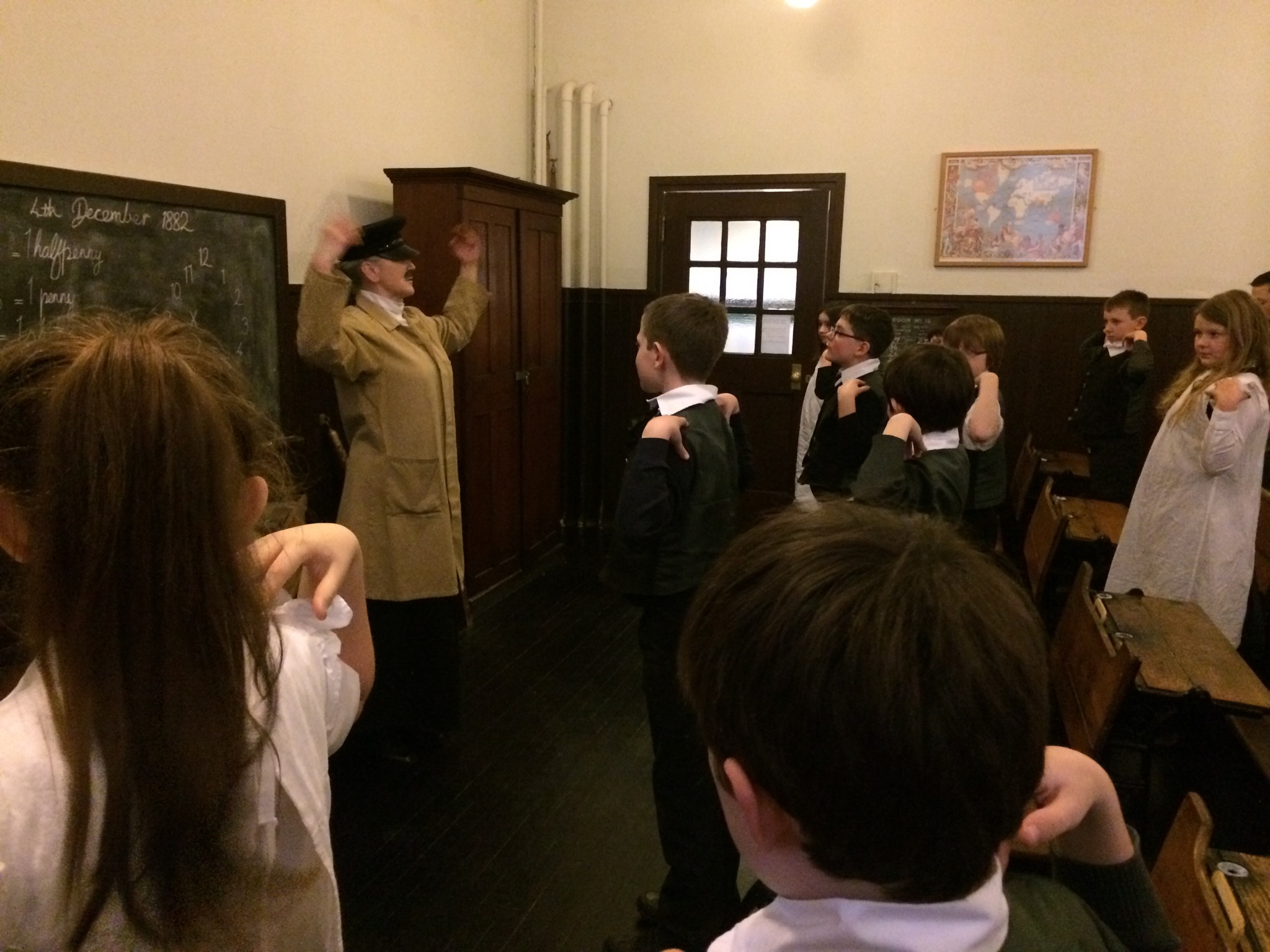
Miss Baxter came out of character and allowed us to breathe a sigh of relief. She kindly explained all about Victorian schooling and gave us the opportunity to ask questions.
Josh was a willing volunteer to try on our dunce hat!
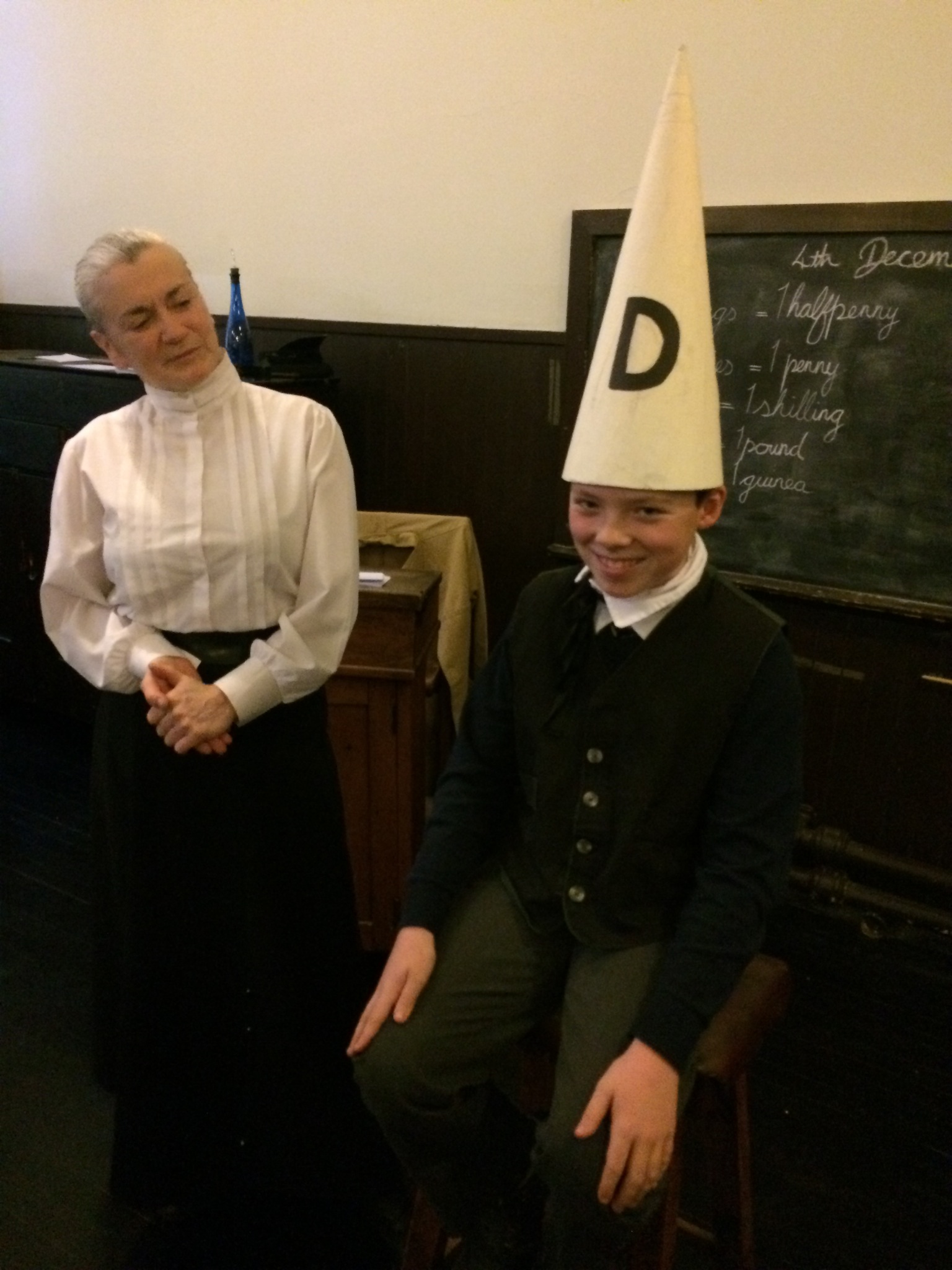
The Dunce’s Hat
A tall pointed hat with a letter D was left conspicuously on a stool in the corner of the classroom. Pupils who were slow at learning were made to stand in the corner wearing the hat while the teacher, and probably other pupils as well, mocked them. Although this seems cruel to modern minds, in Victorian times it was thought that all pupils were capable of learning equally and that a slow pupil was being deliberately lazy or reluctant to learn. The dunce would remain in the corner, sometimes standing on the stool, until the end of the lessons.
What a day! It was great fun but we went back to school absolutely exhausted!!!
(We are so relieved our teacher isn’t anything like Miss Baxter that we have decided to bring her a bar of her favourite chocolate – every day!)


